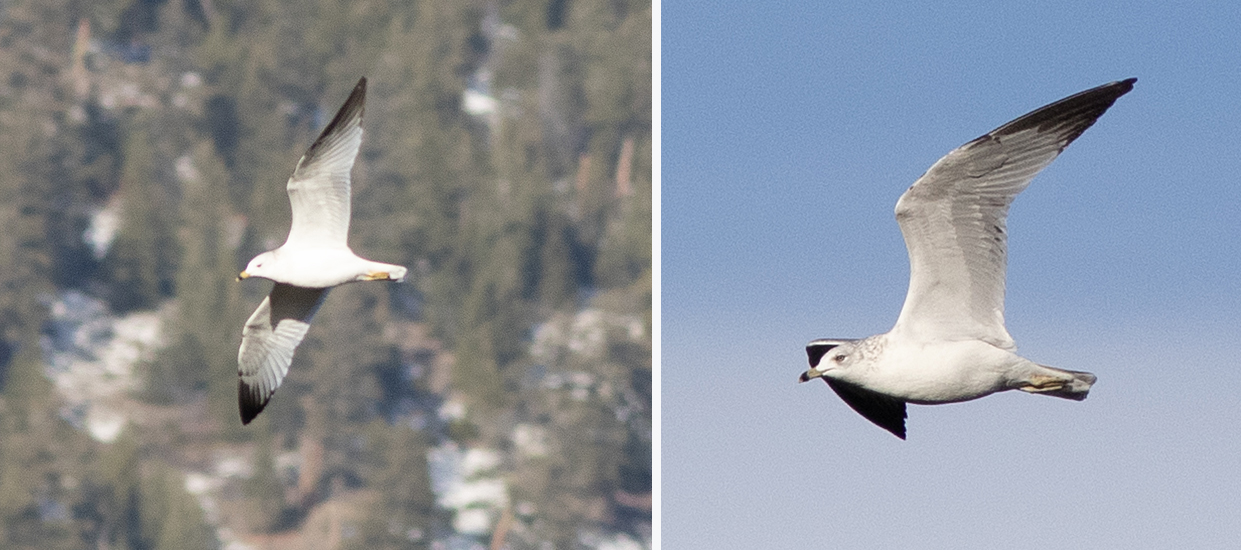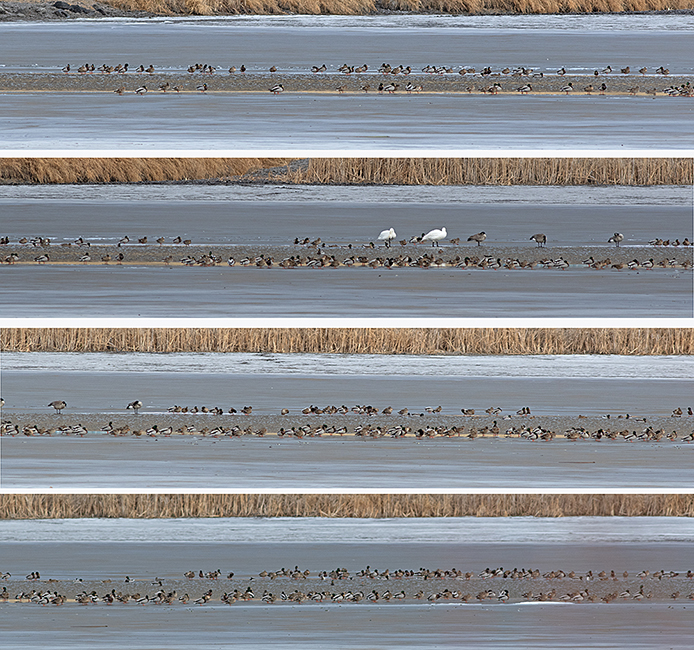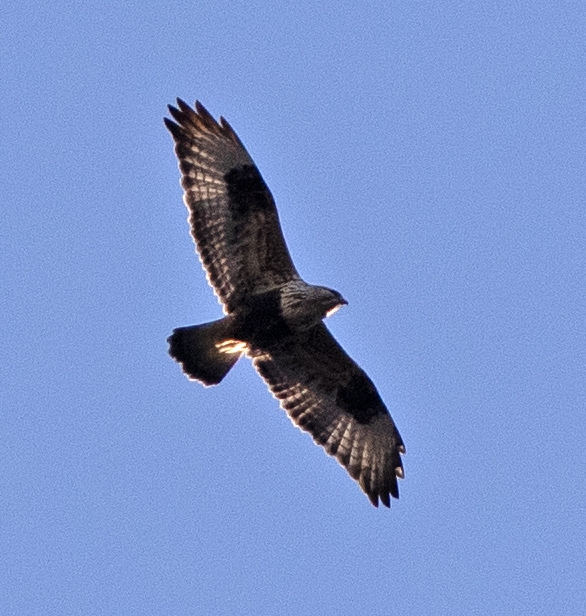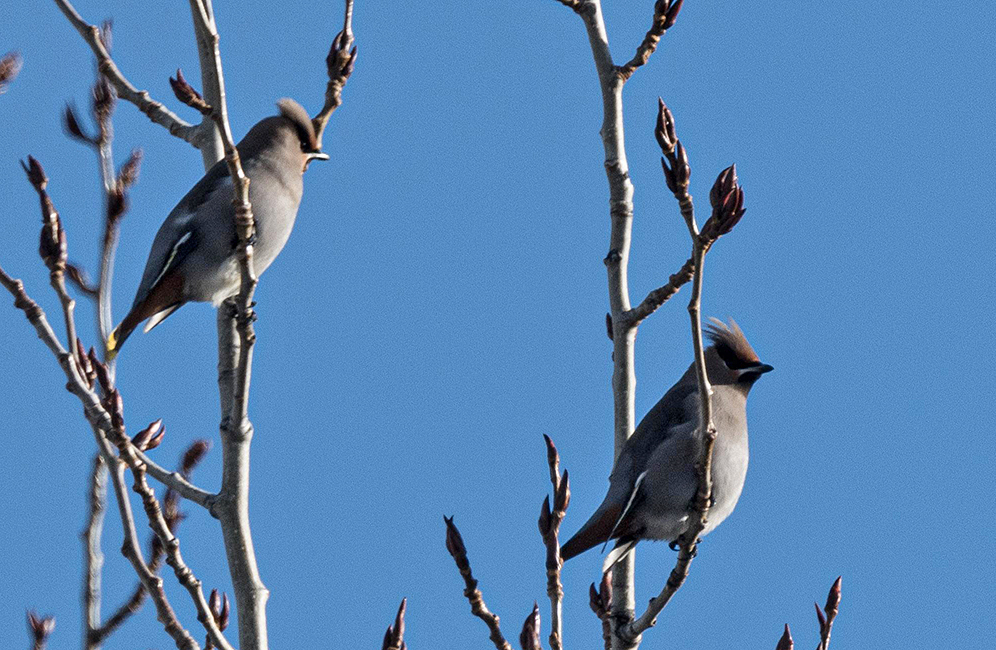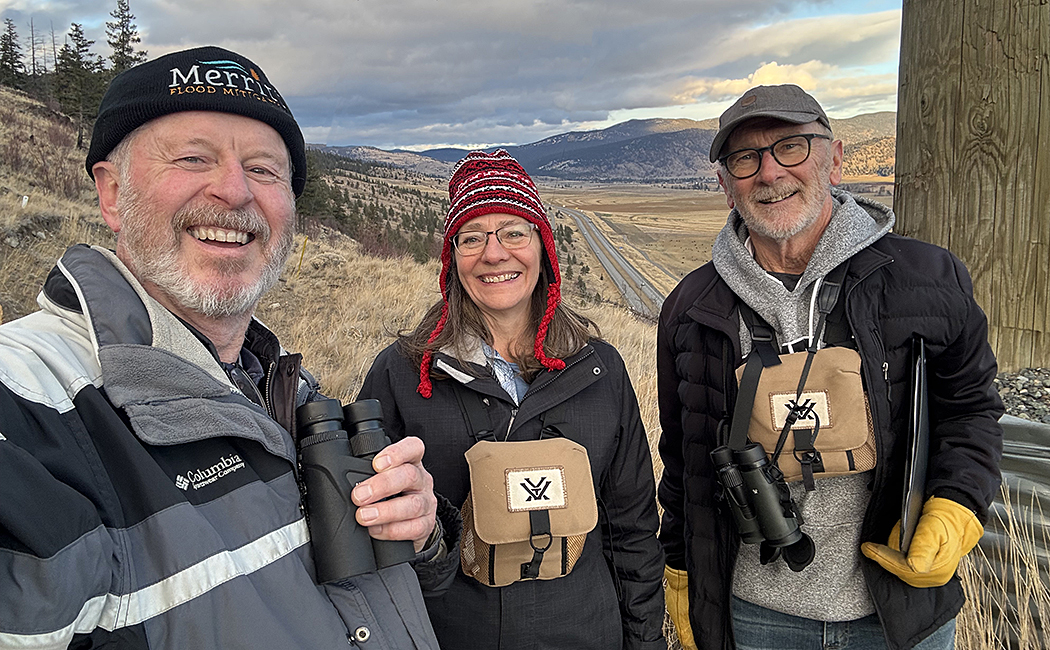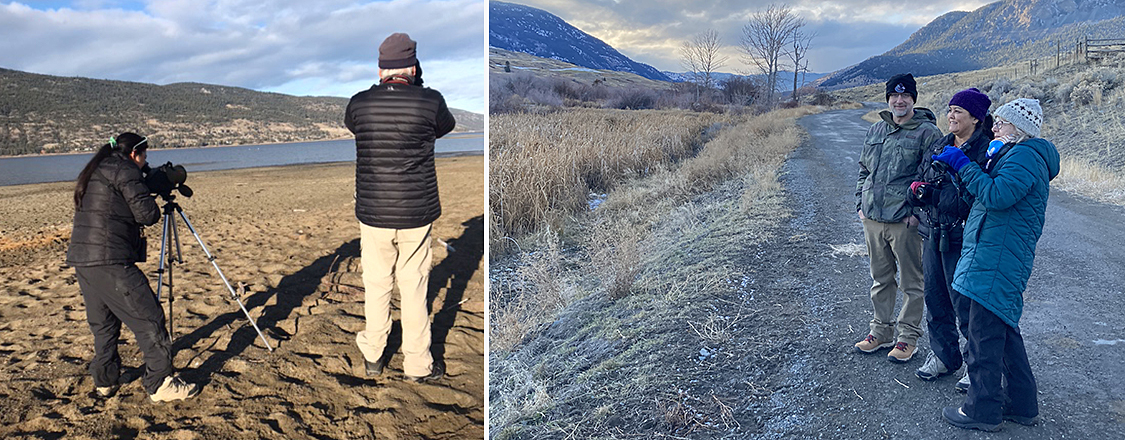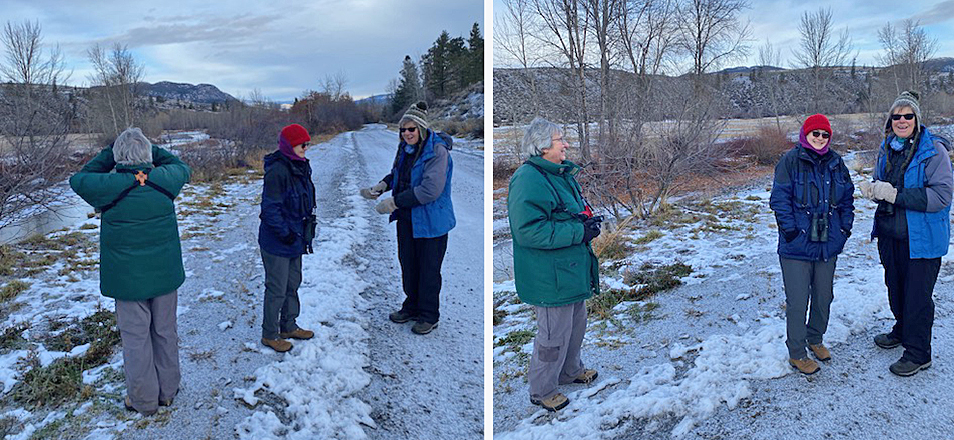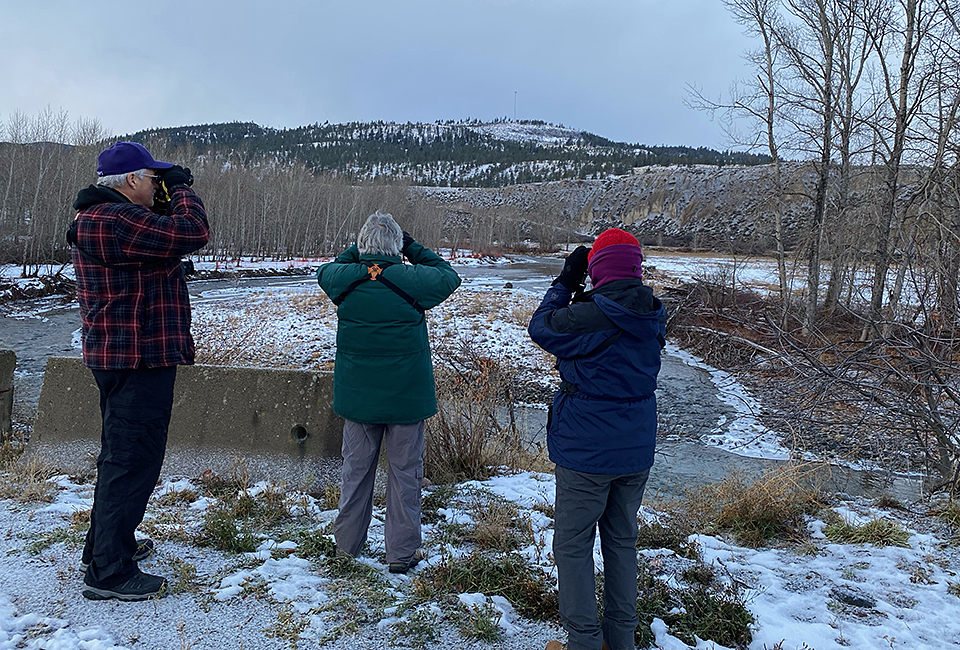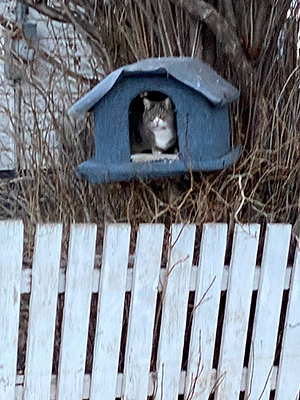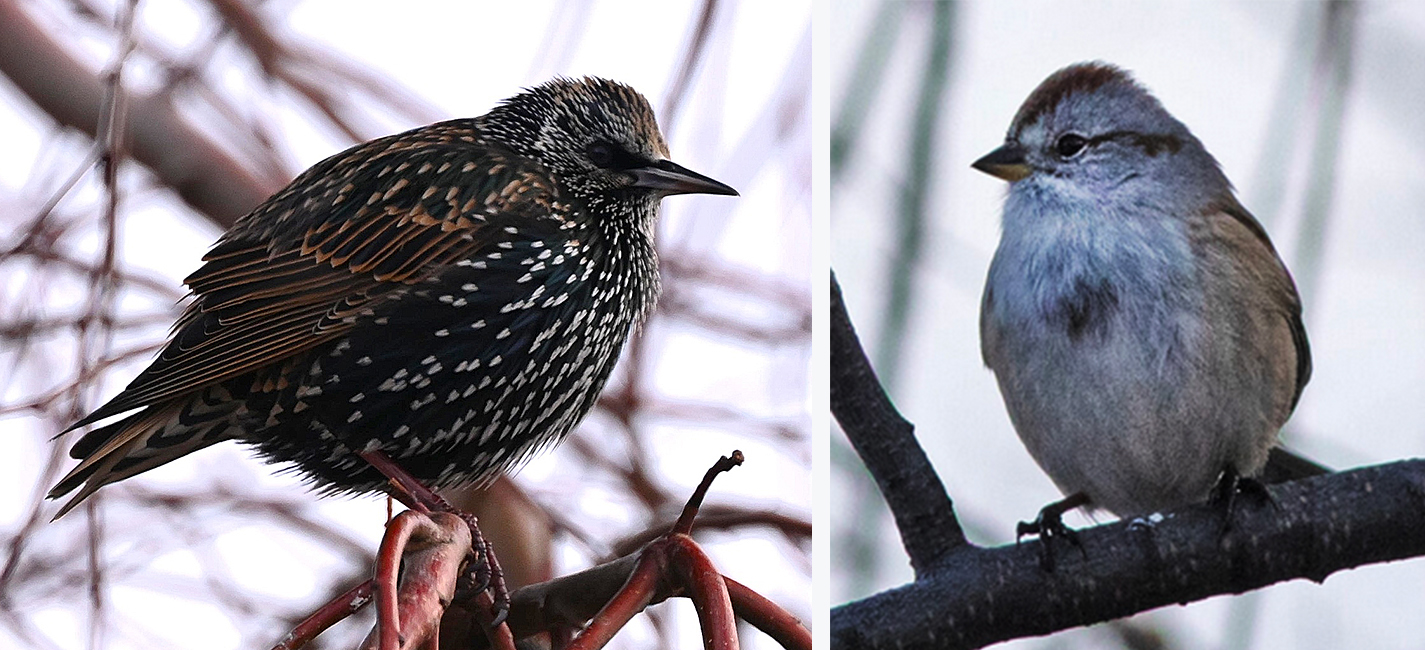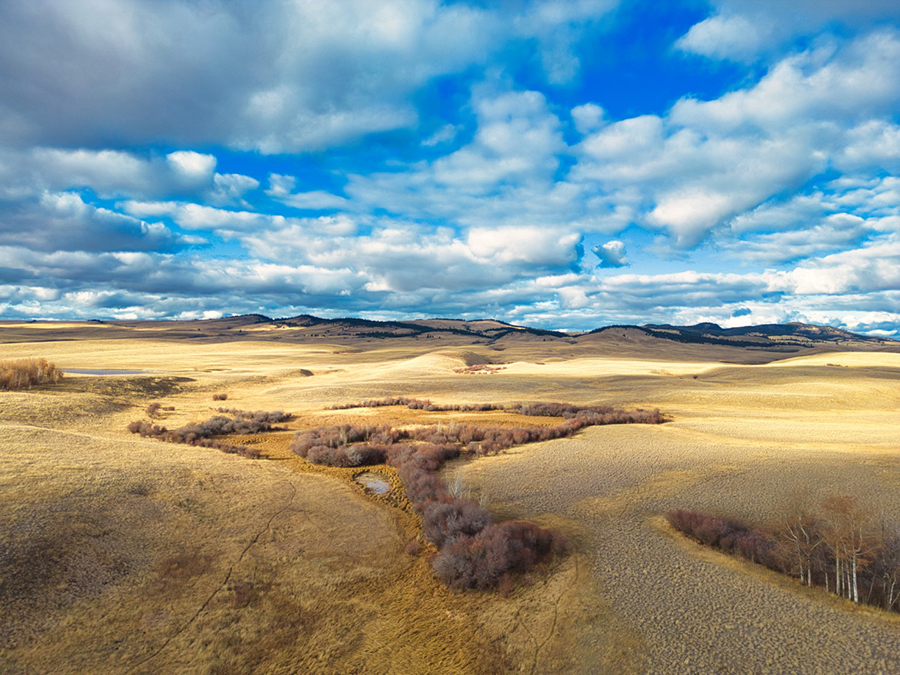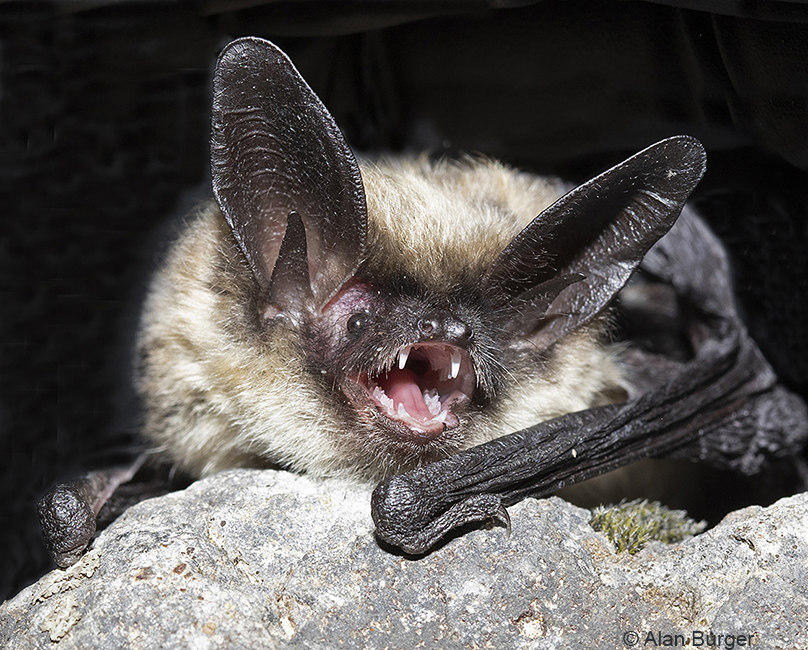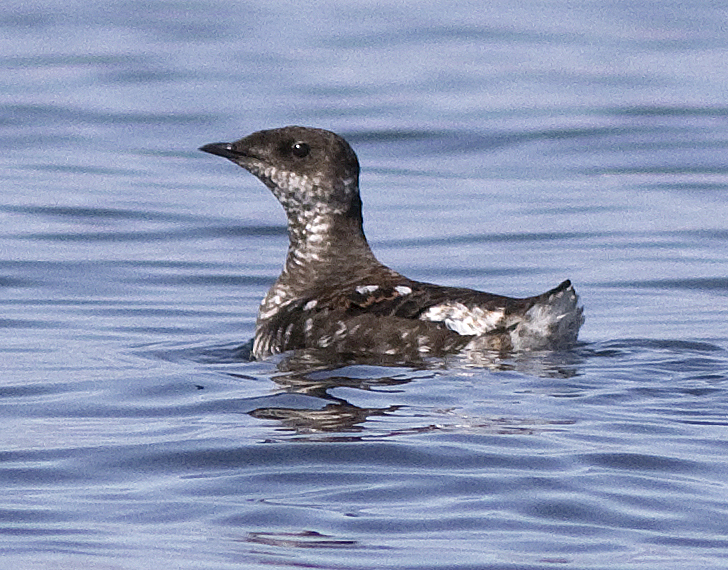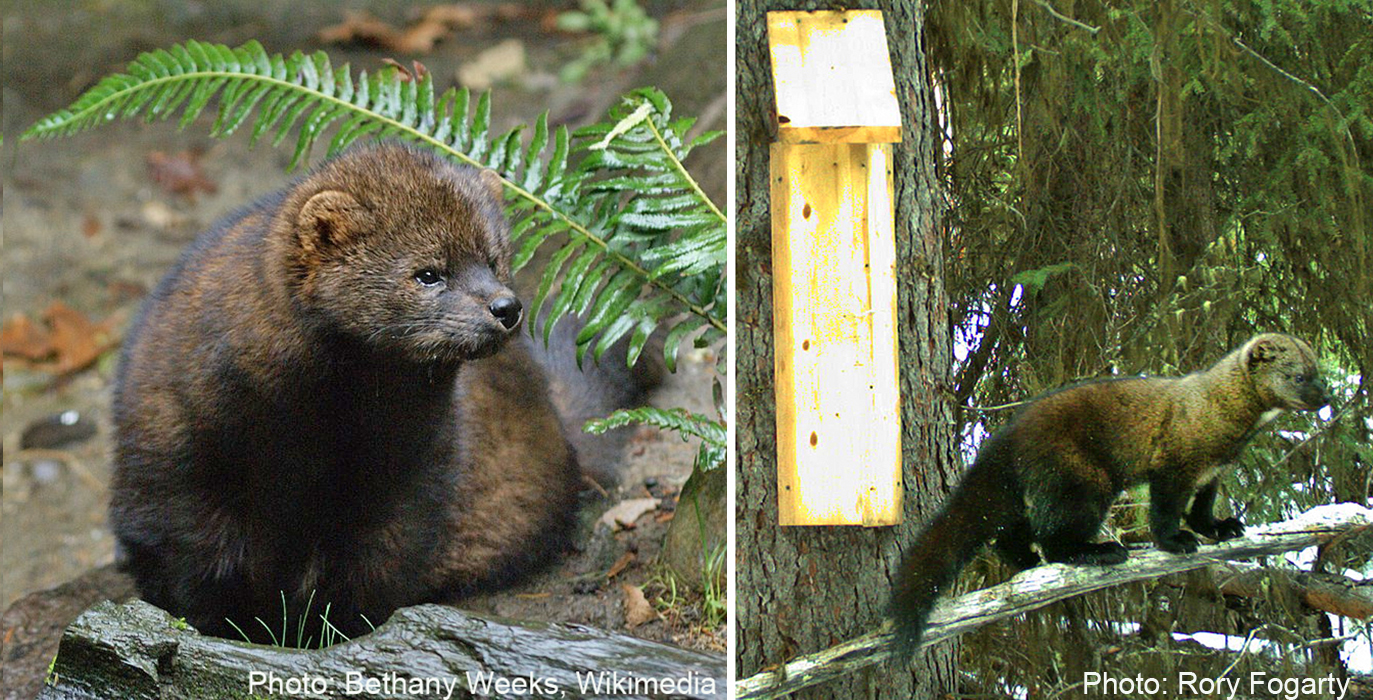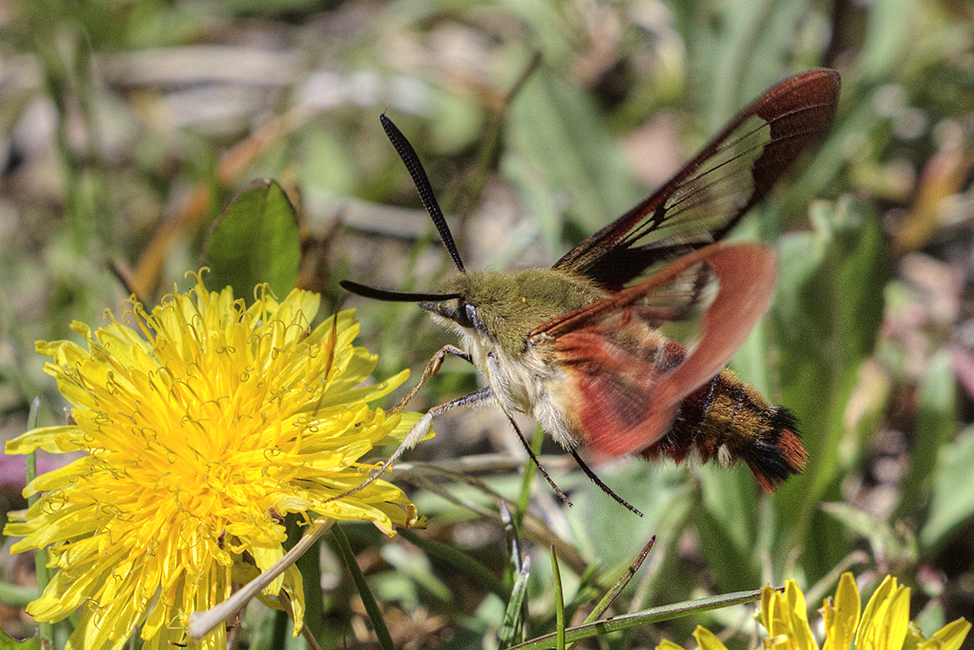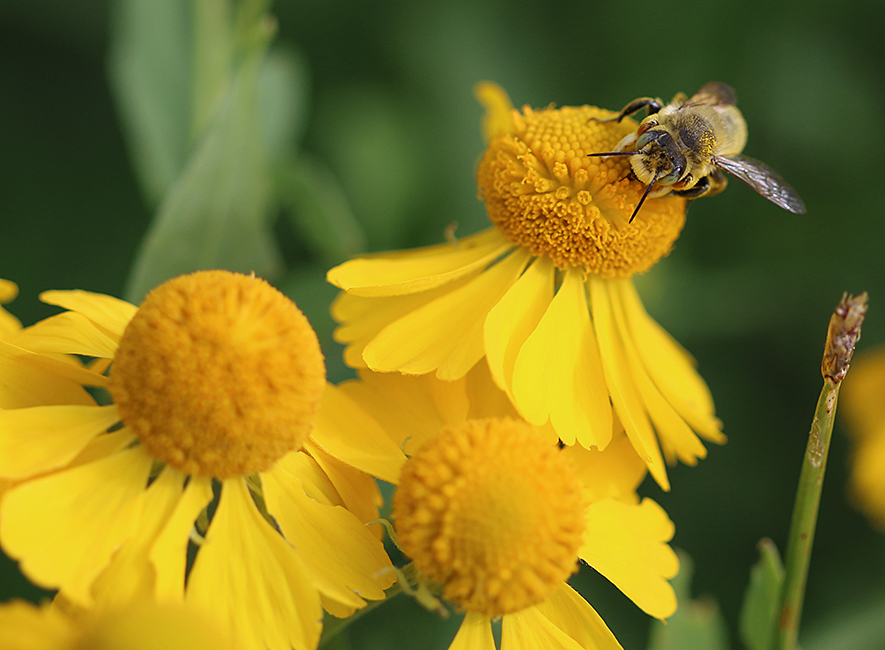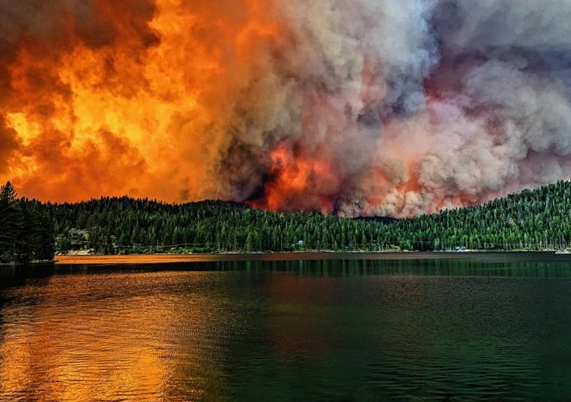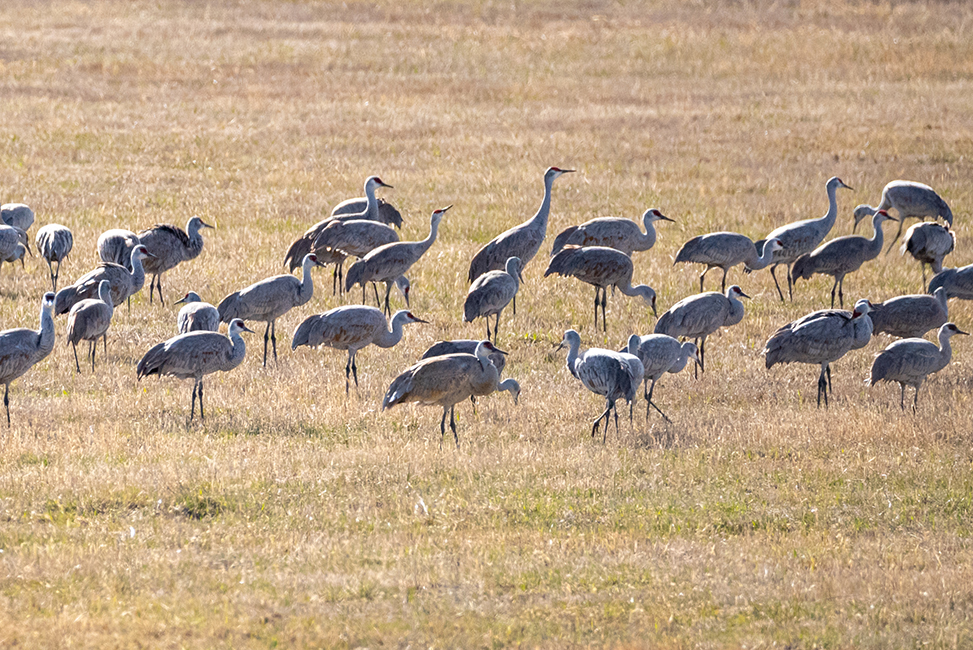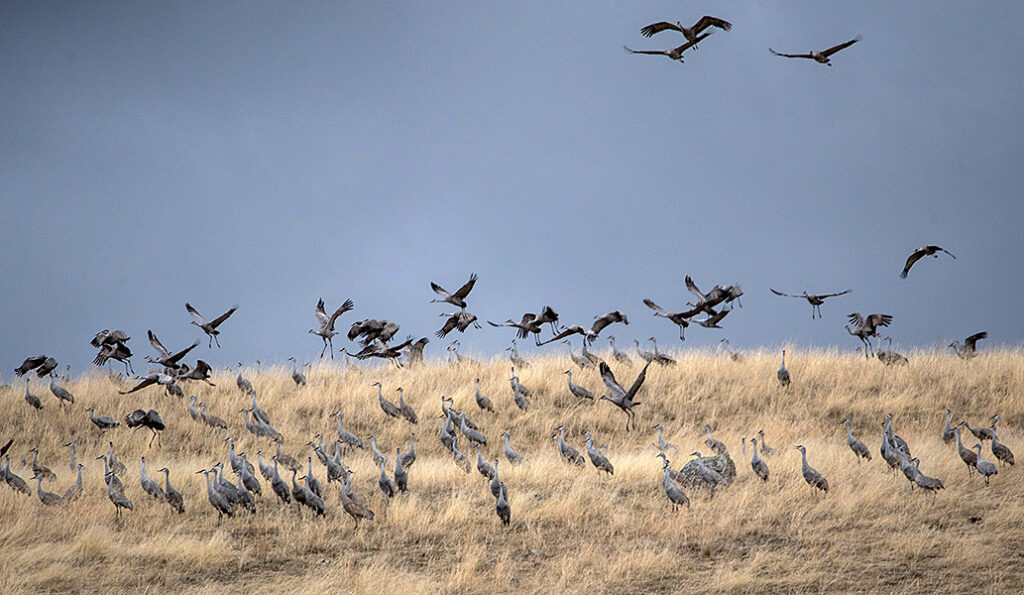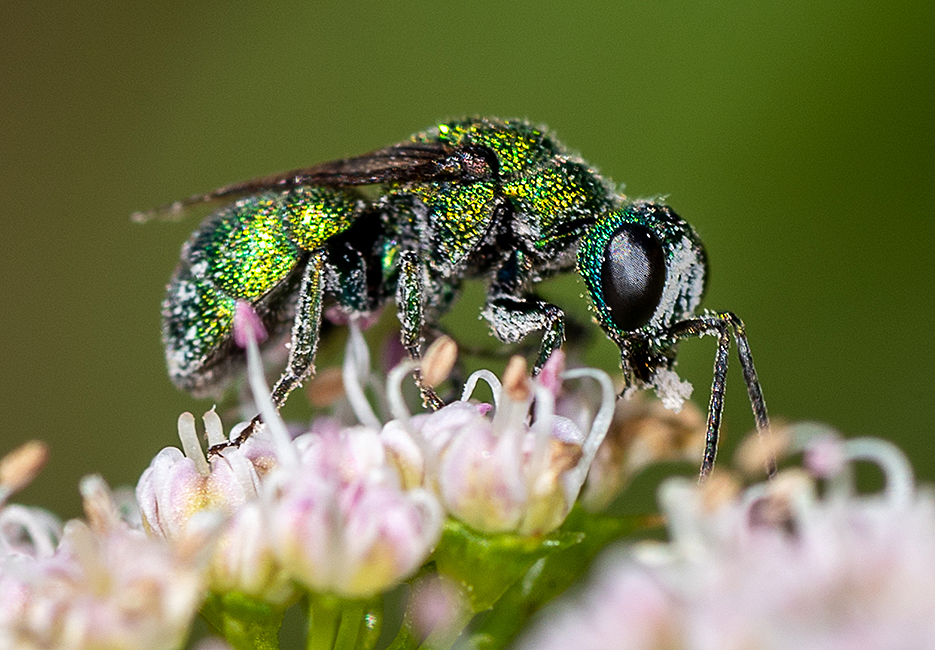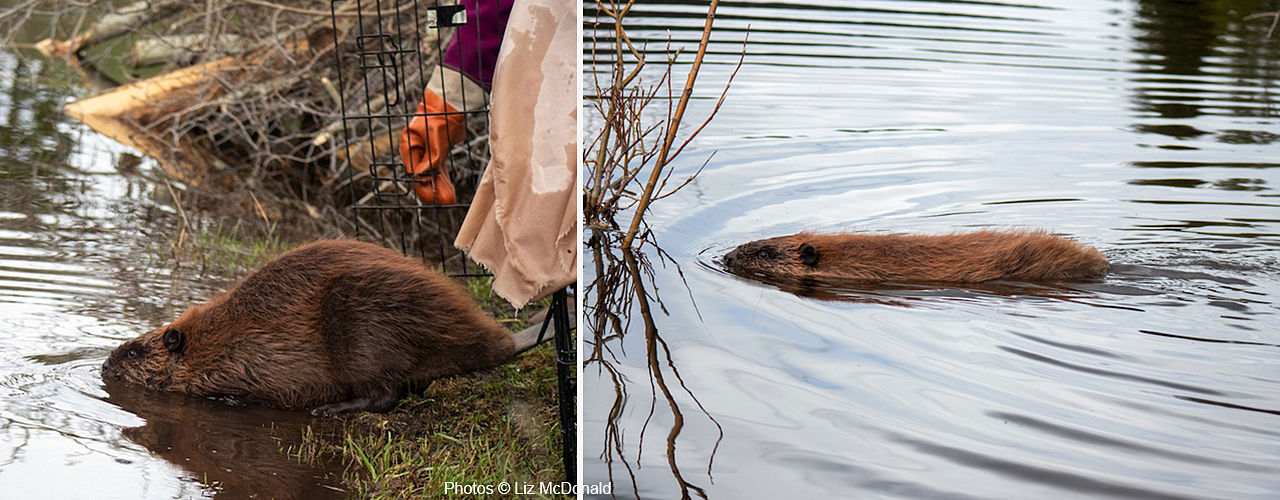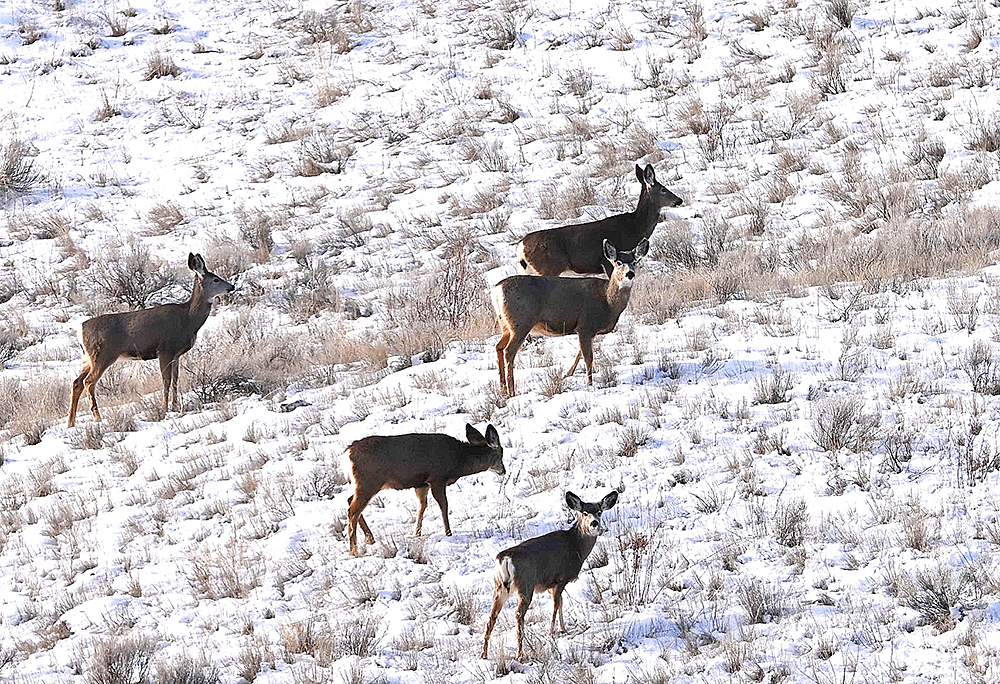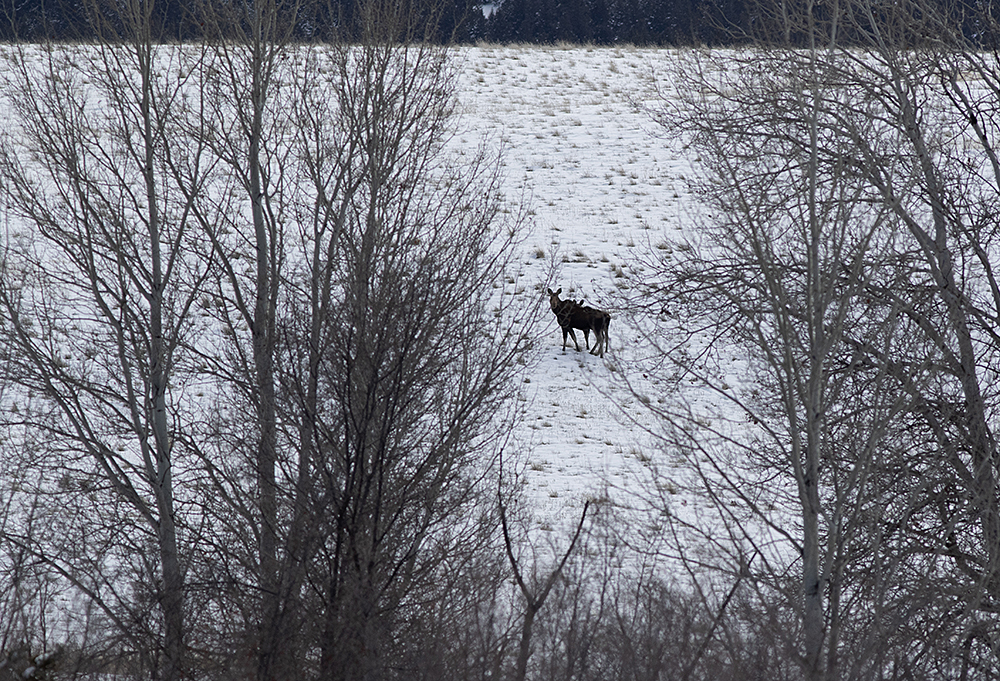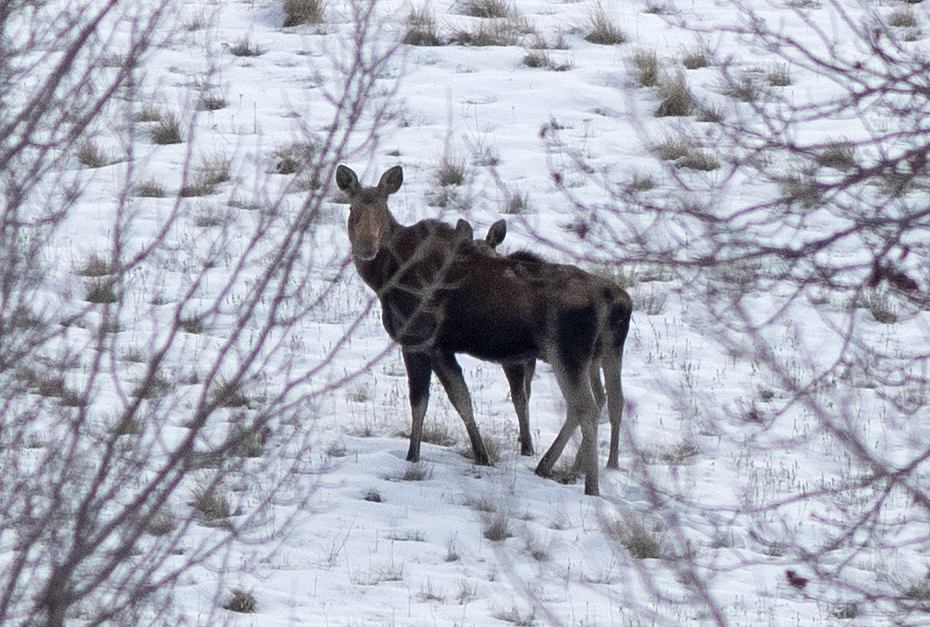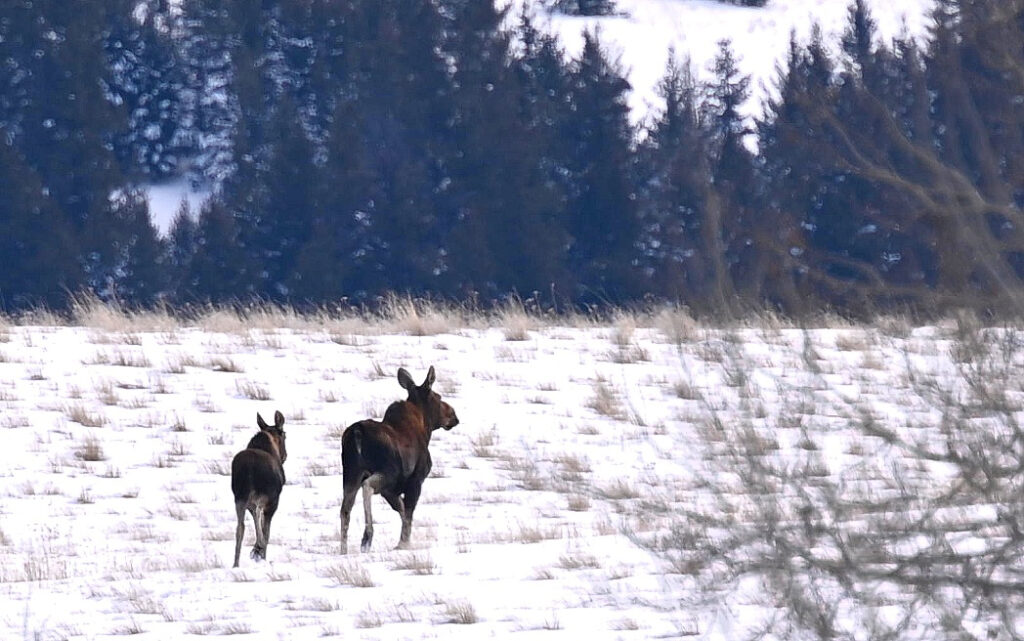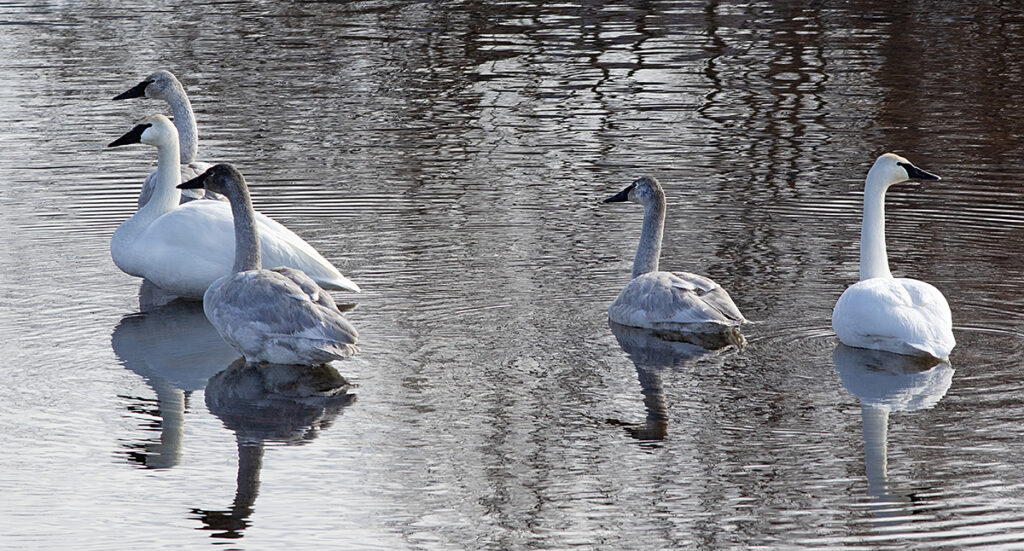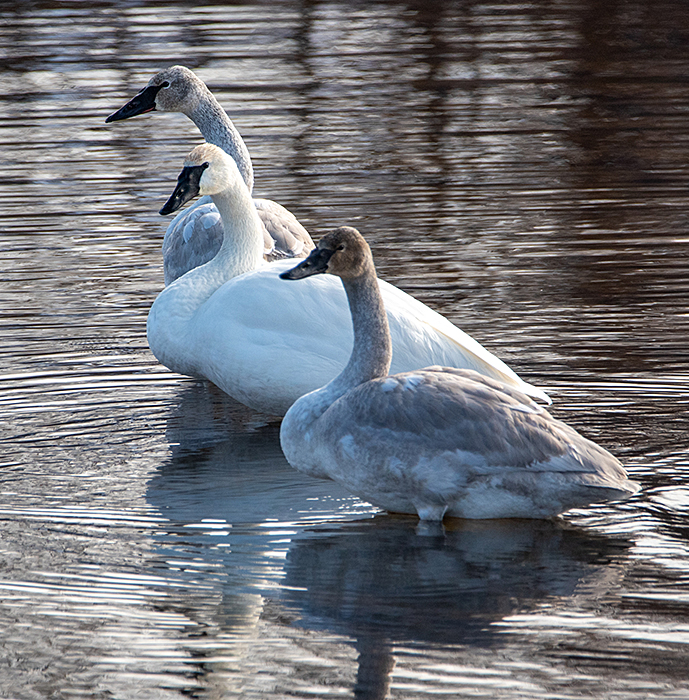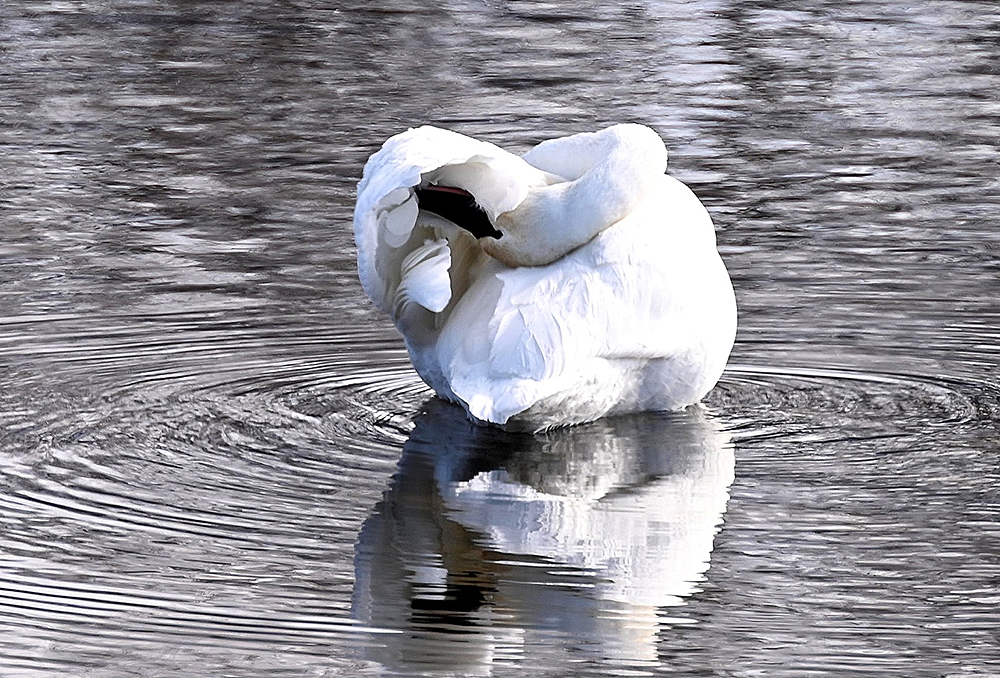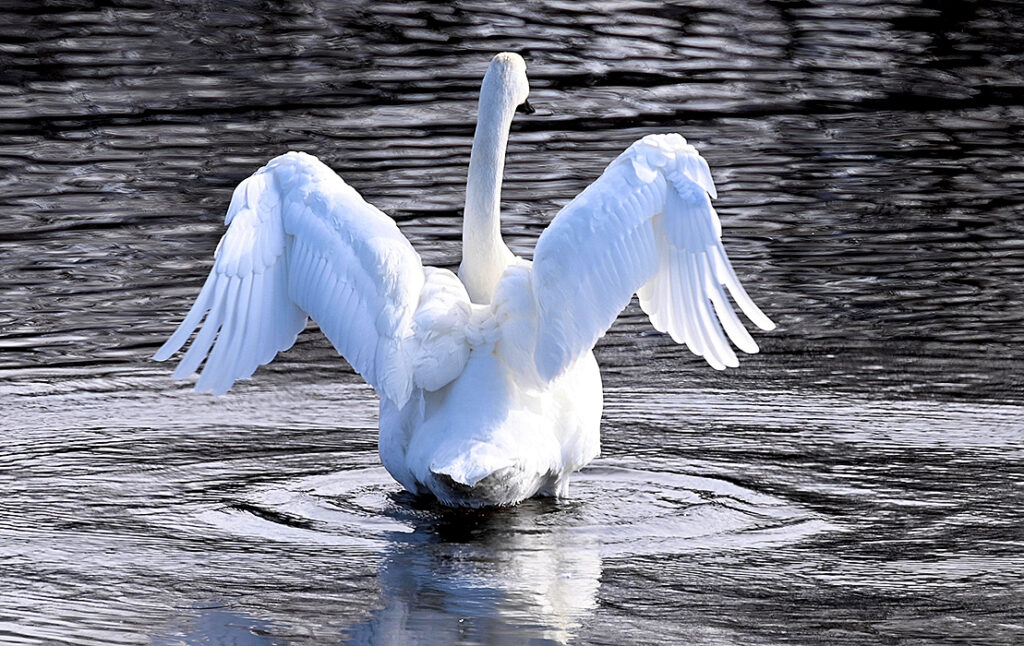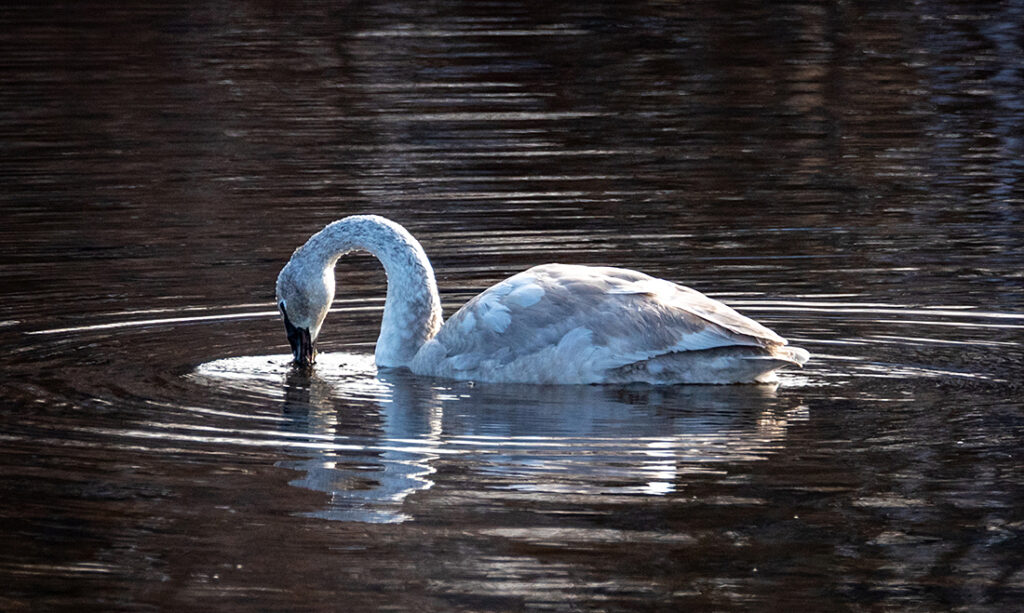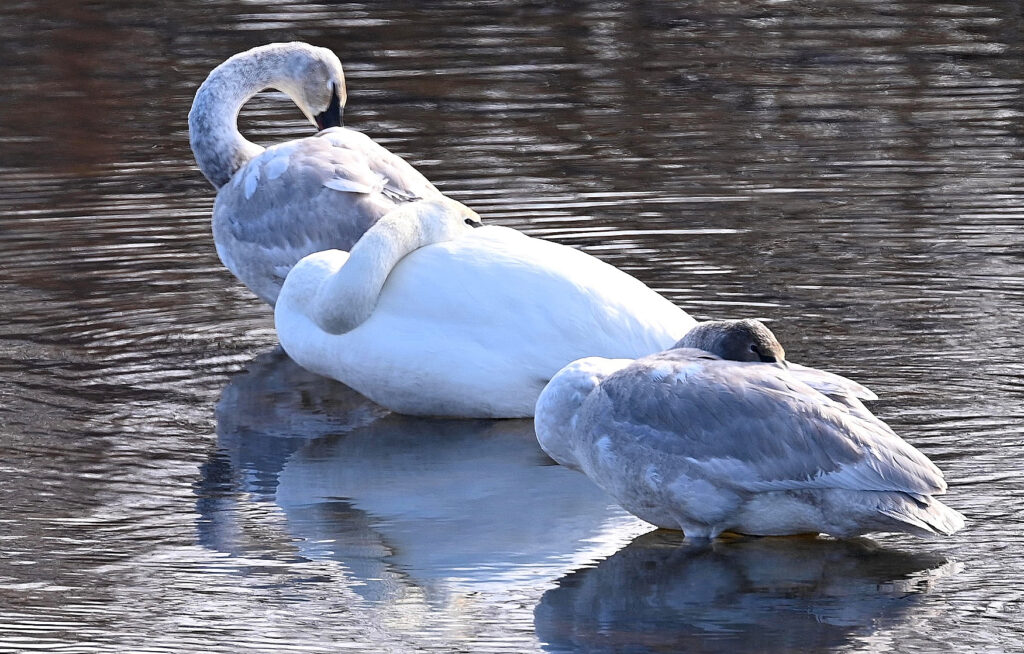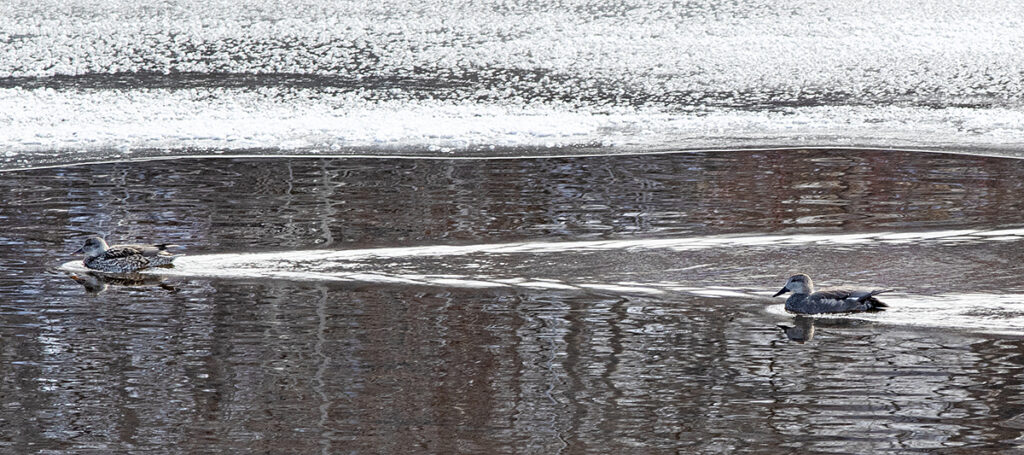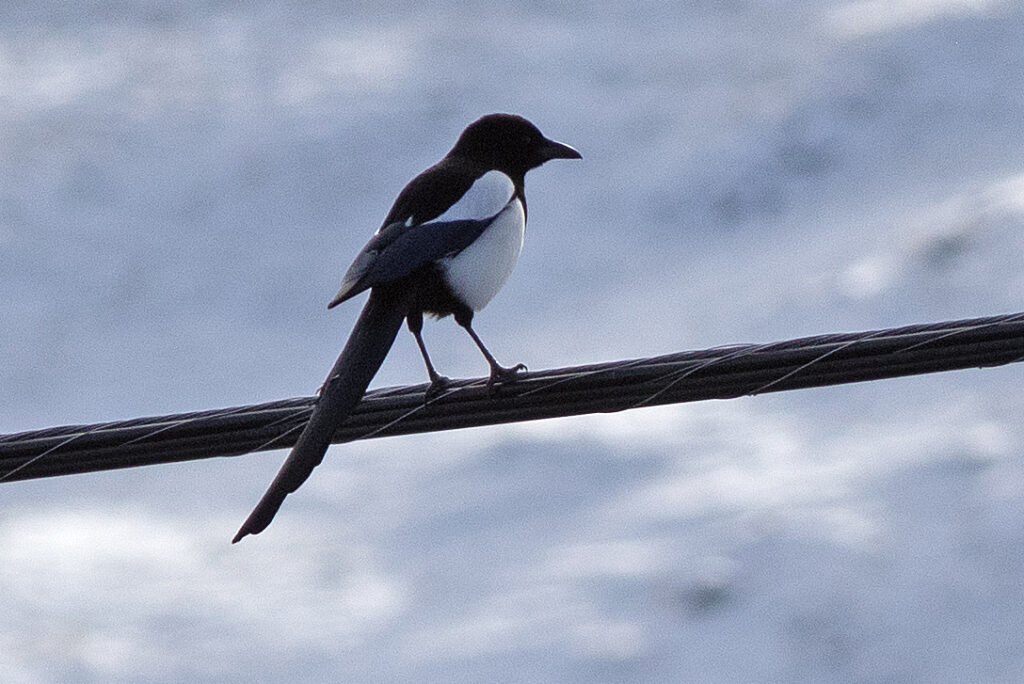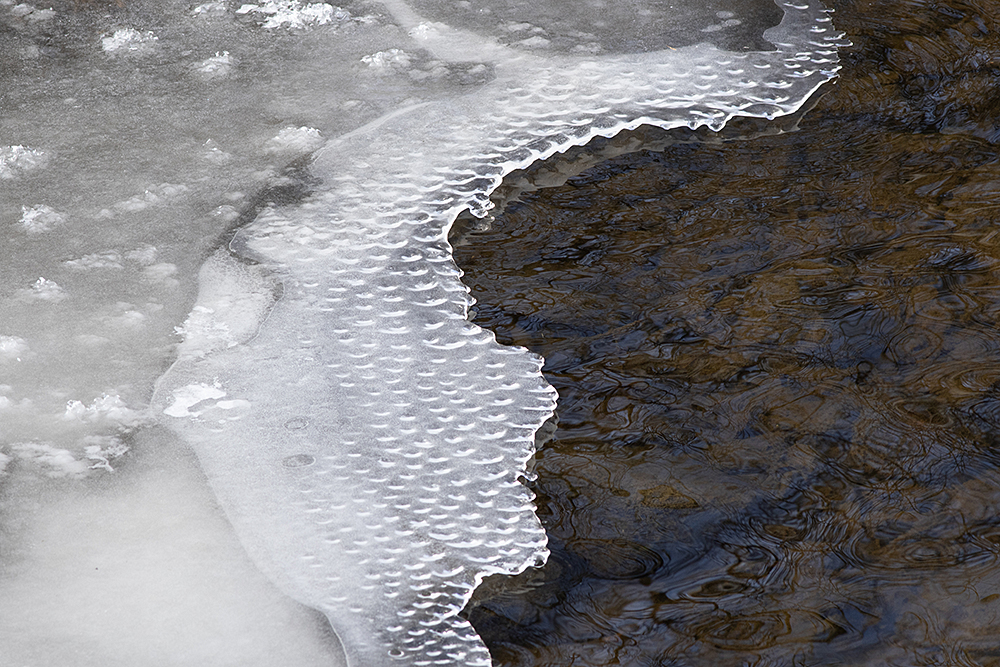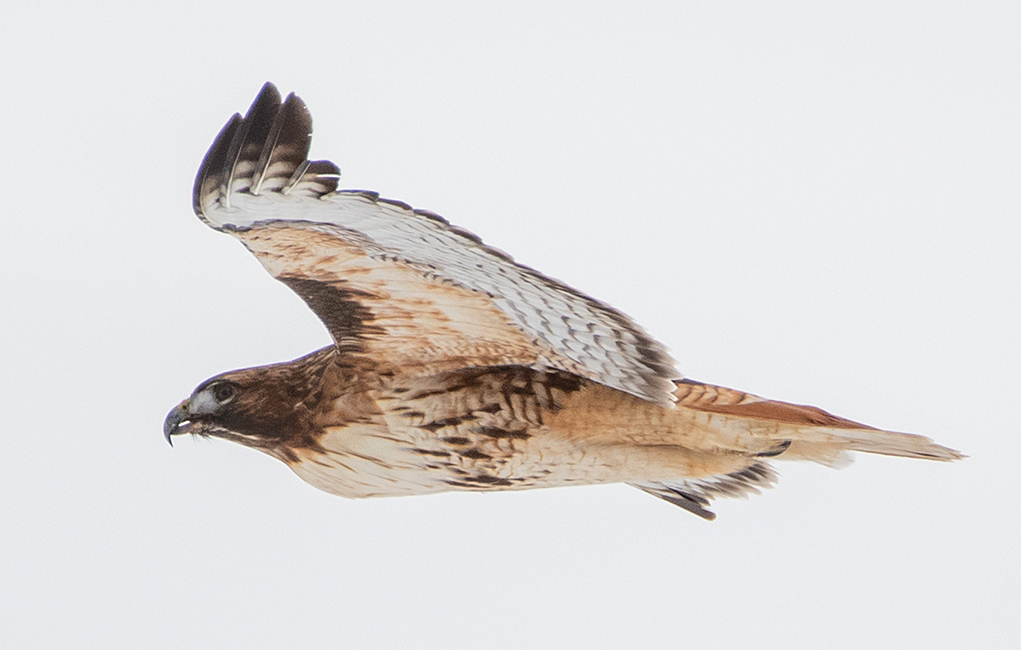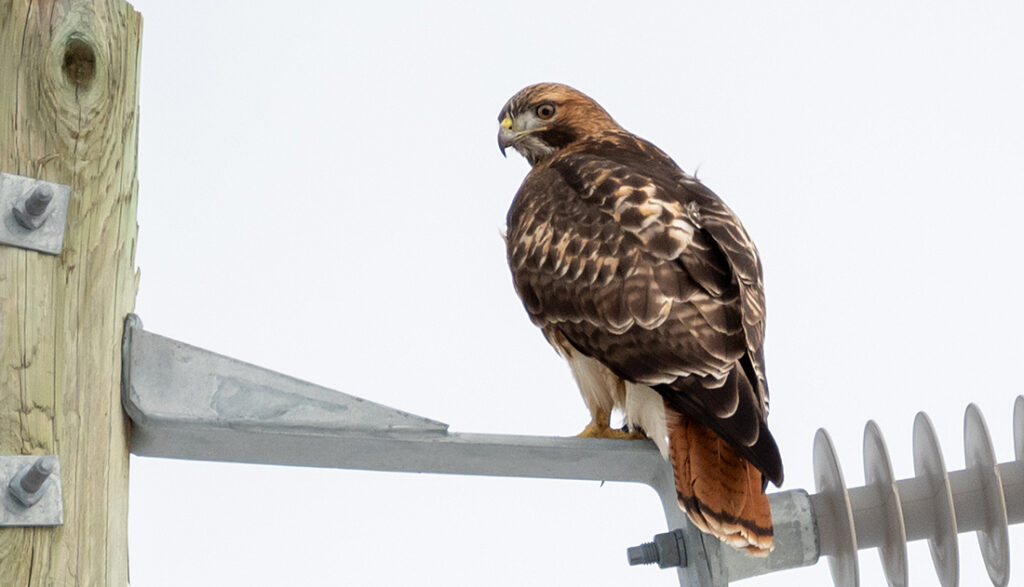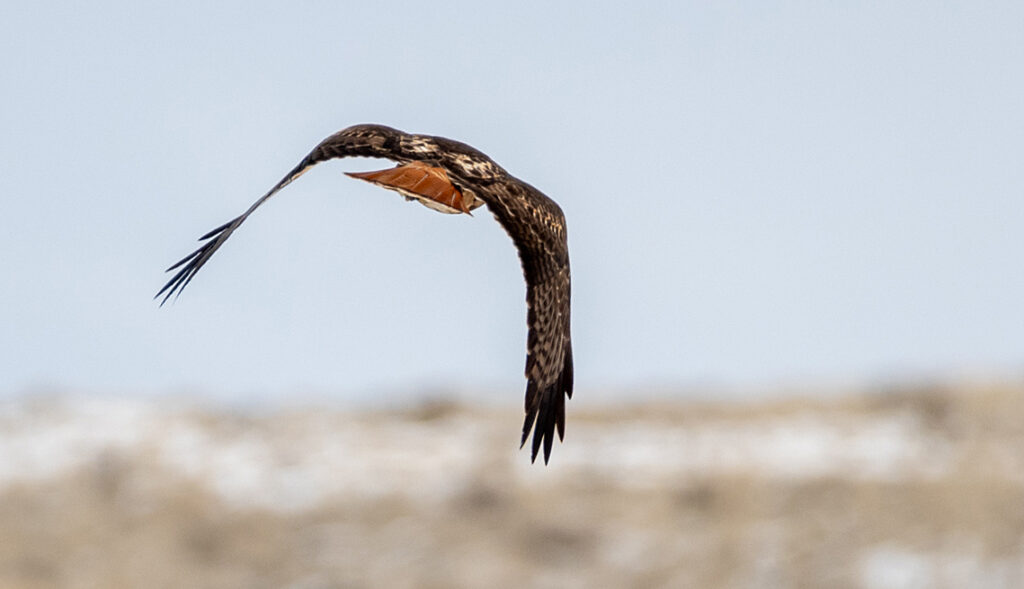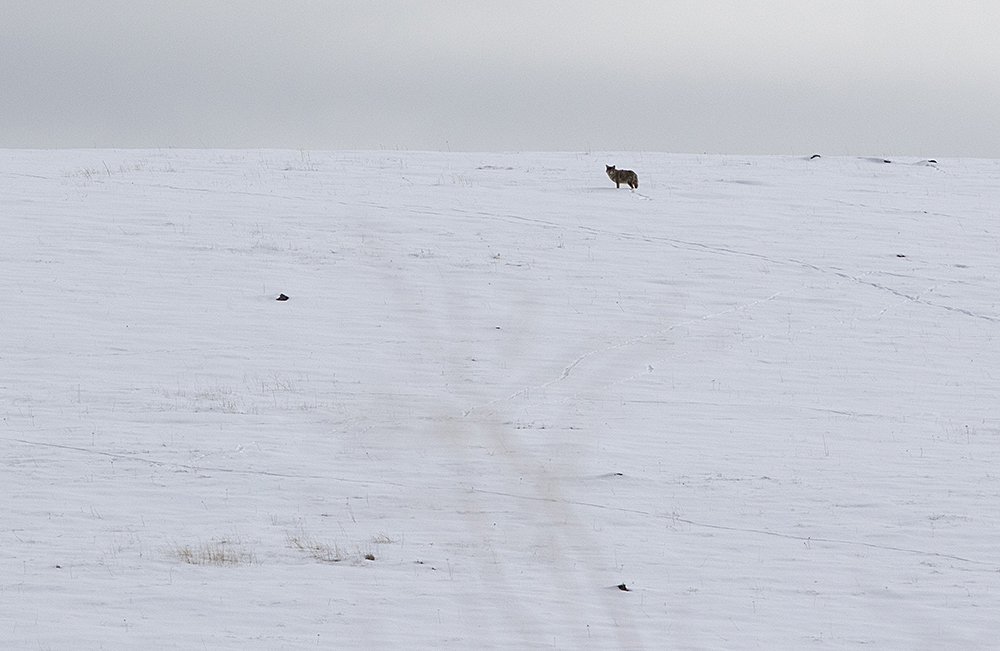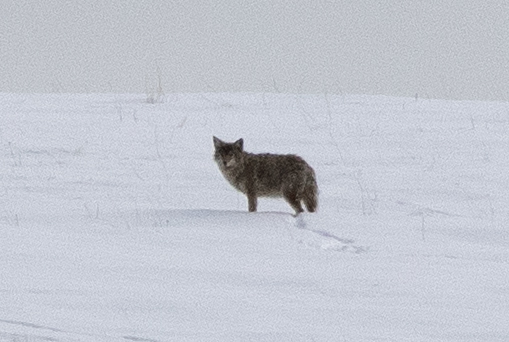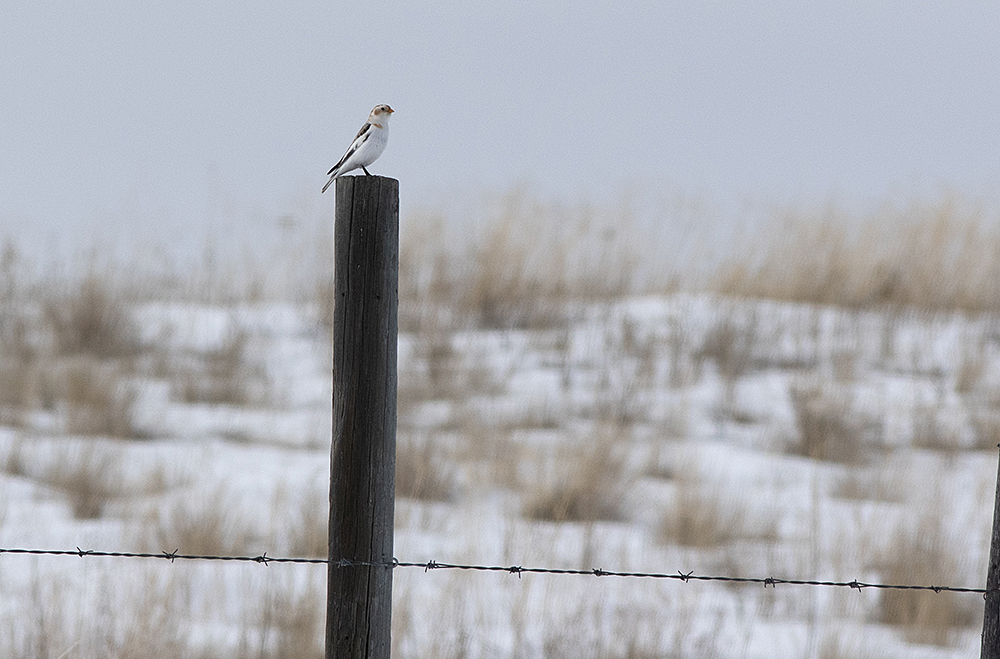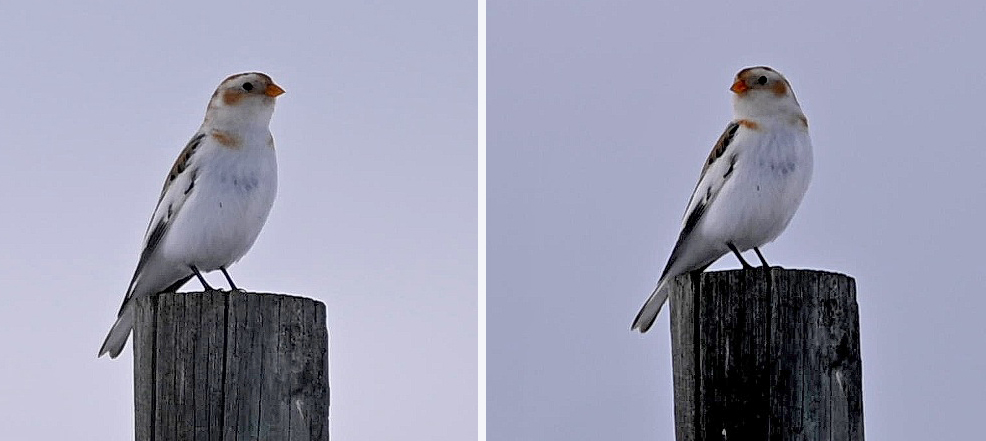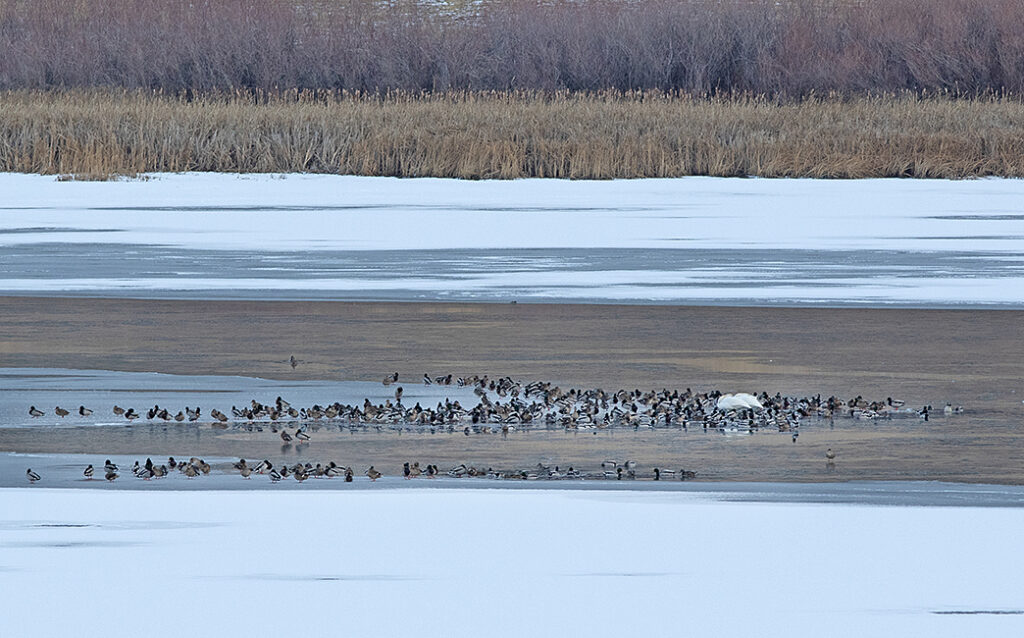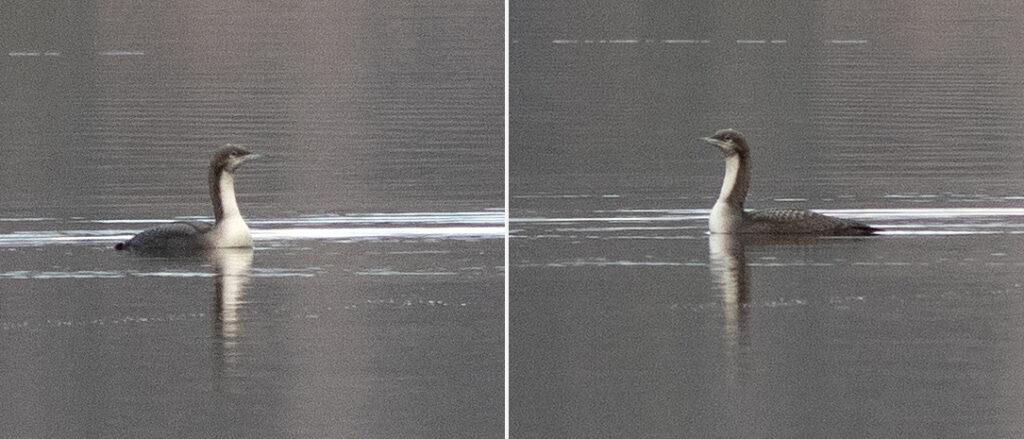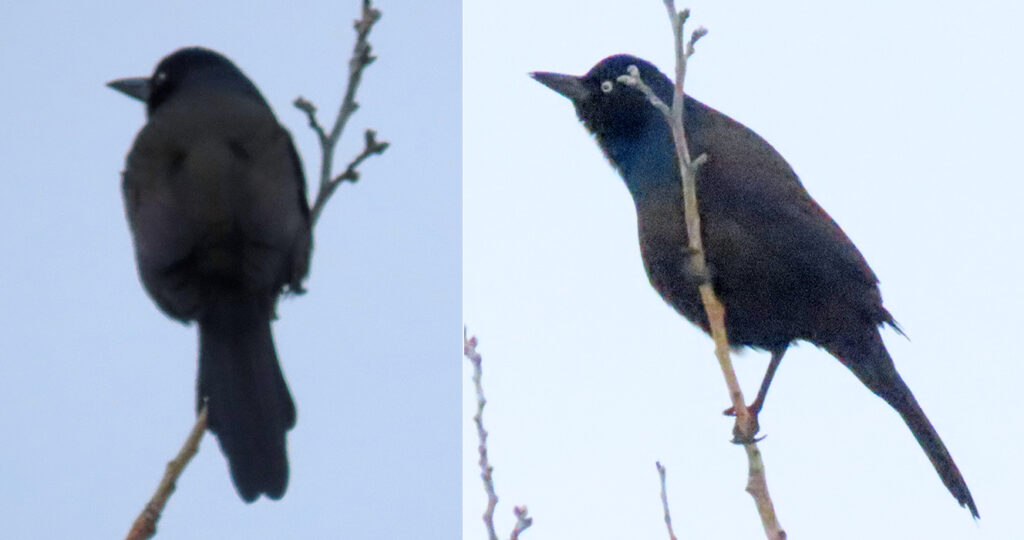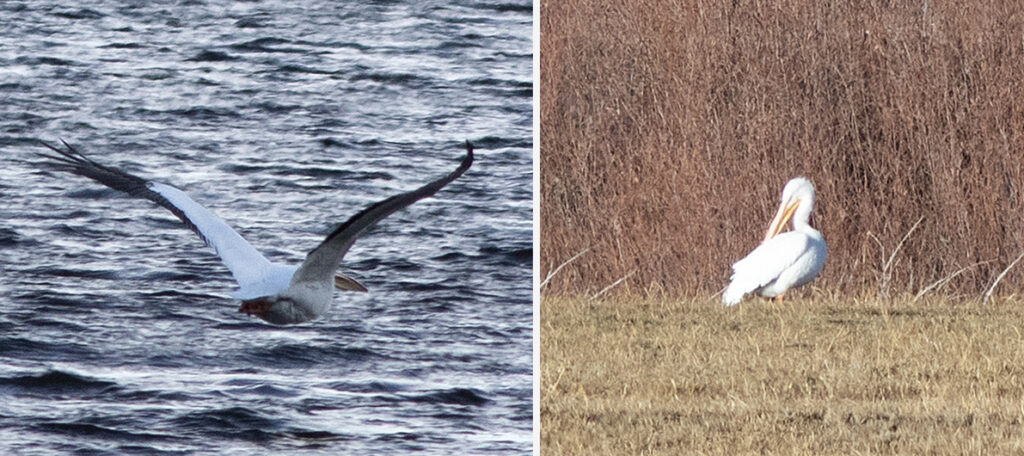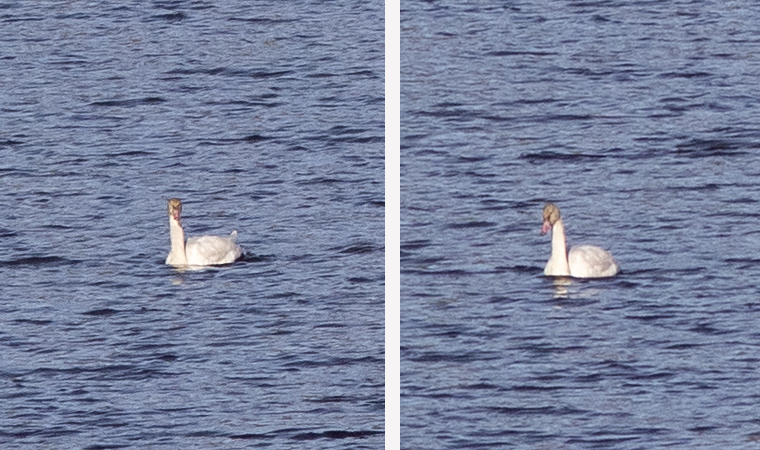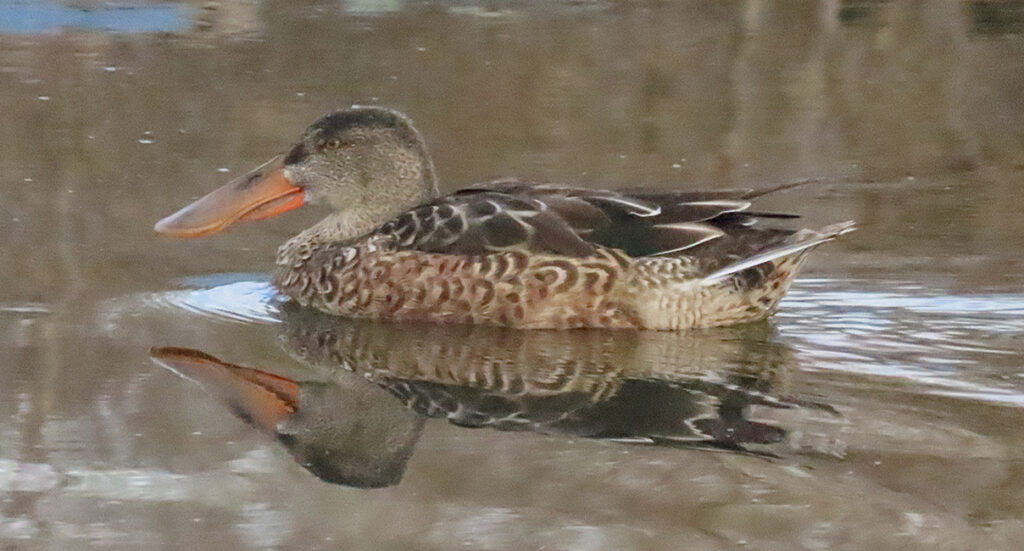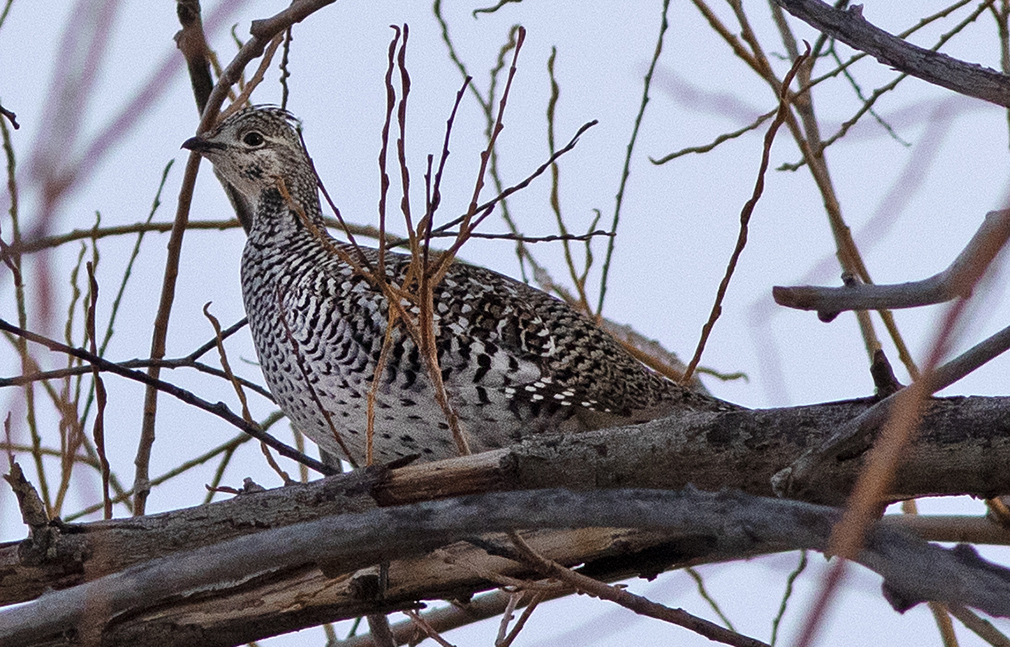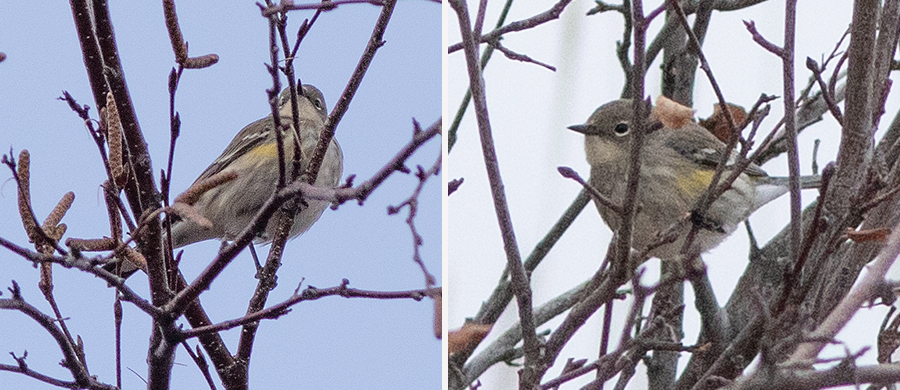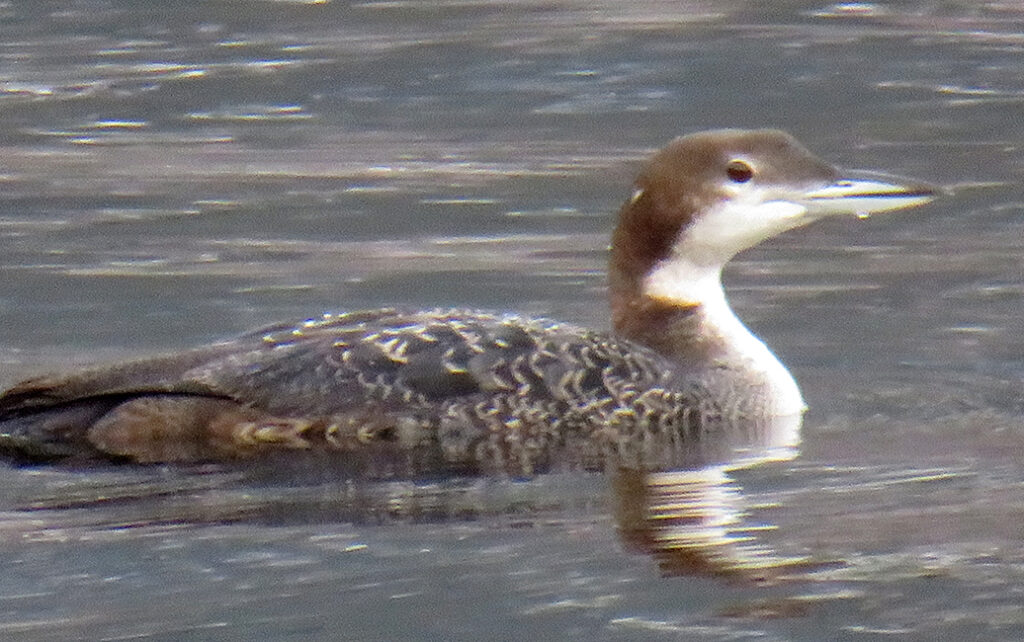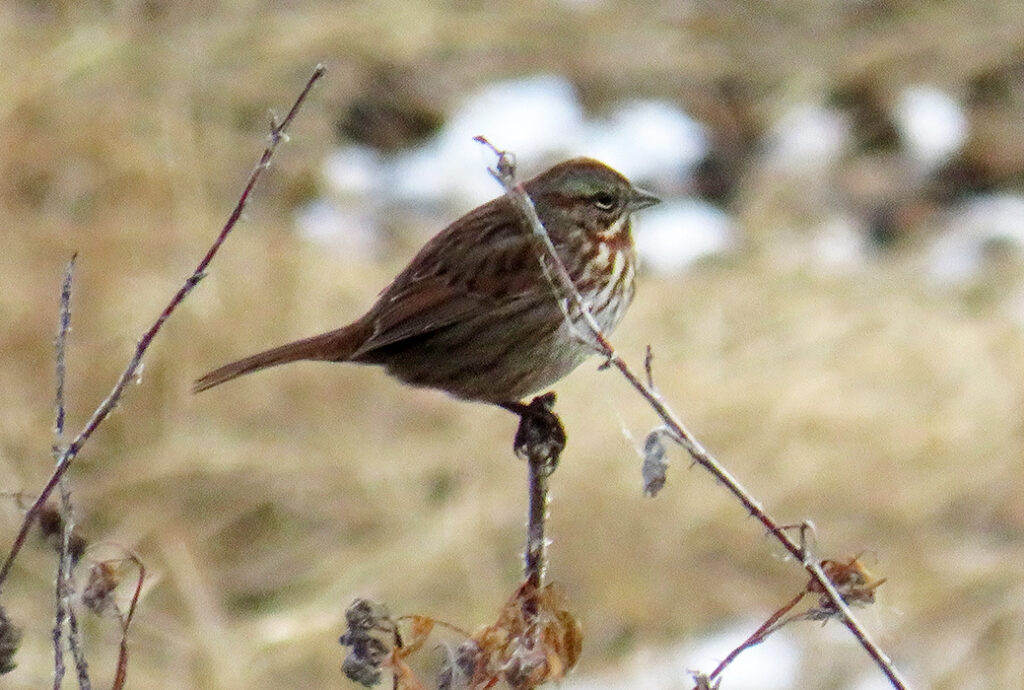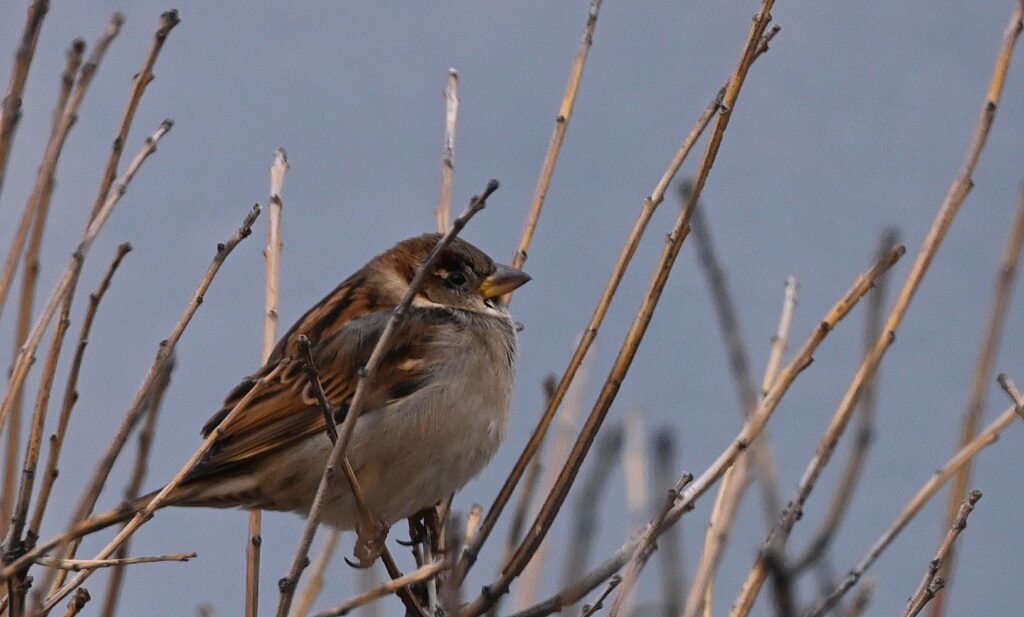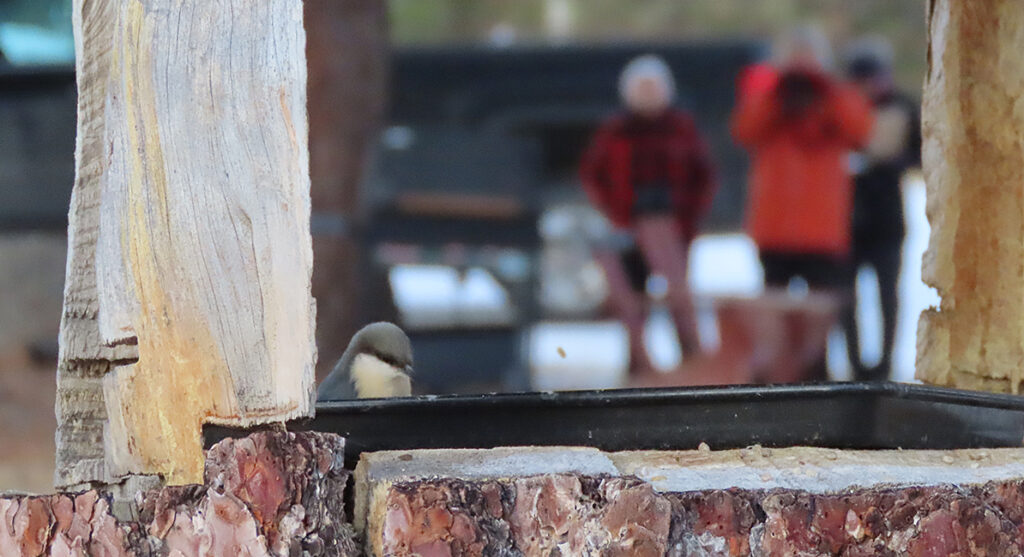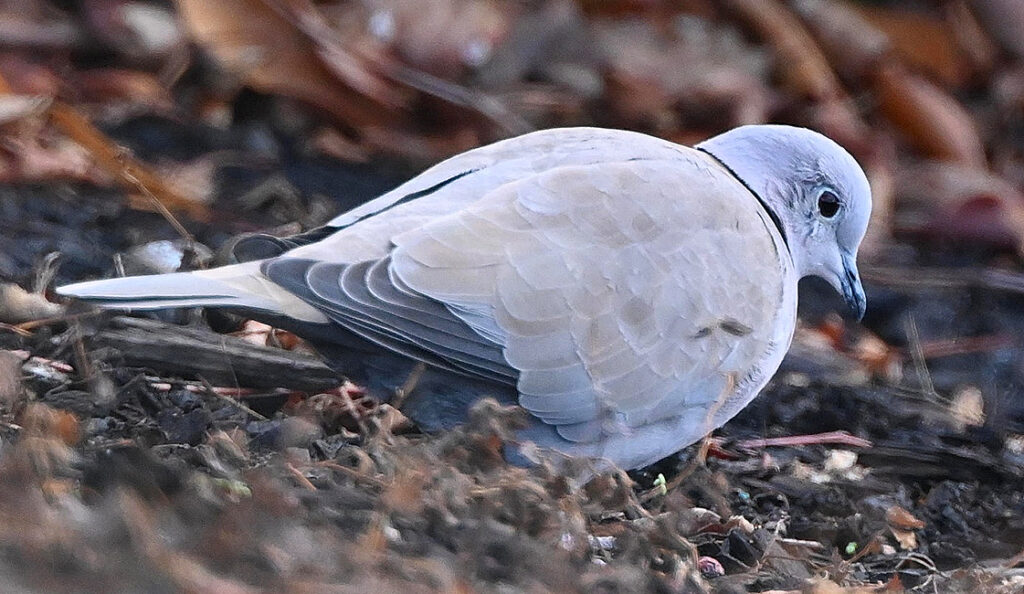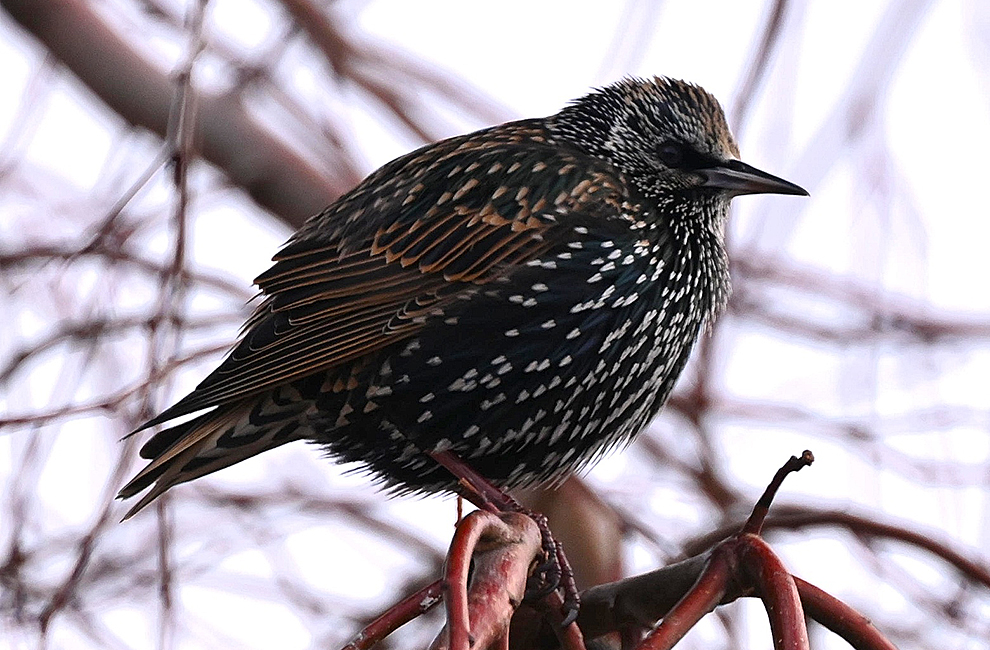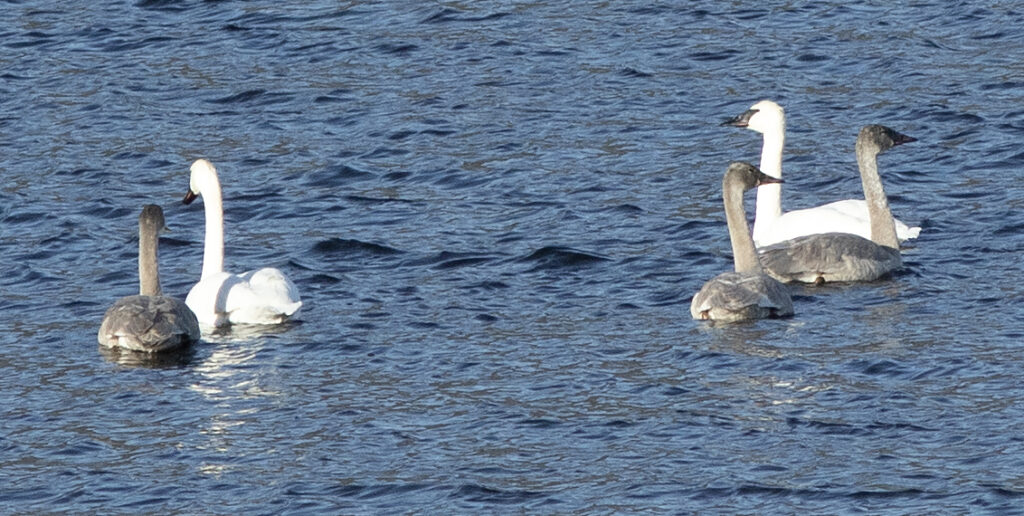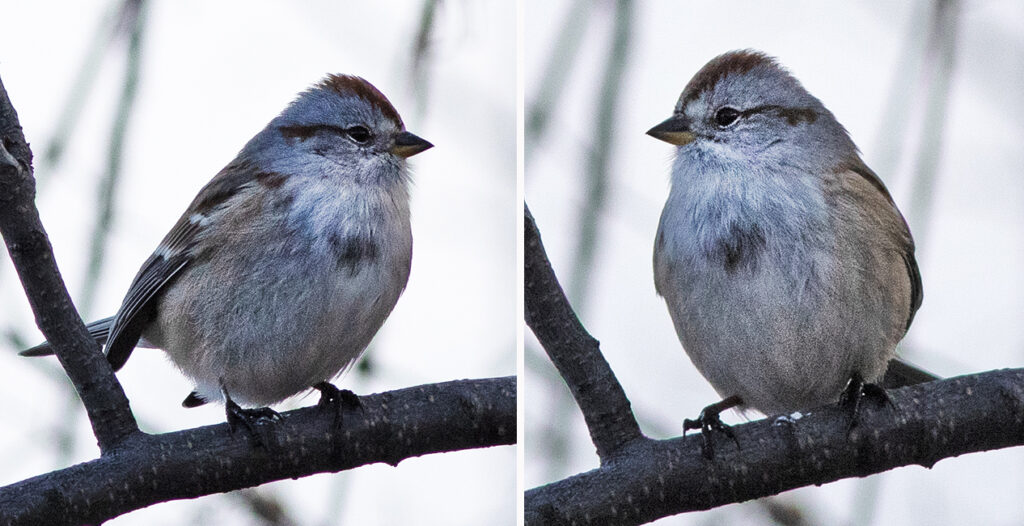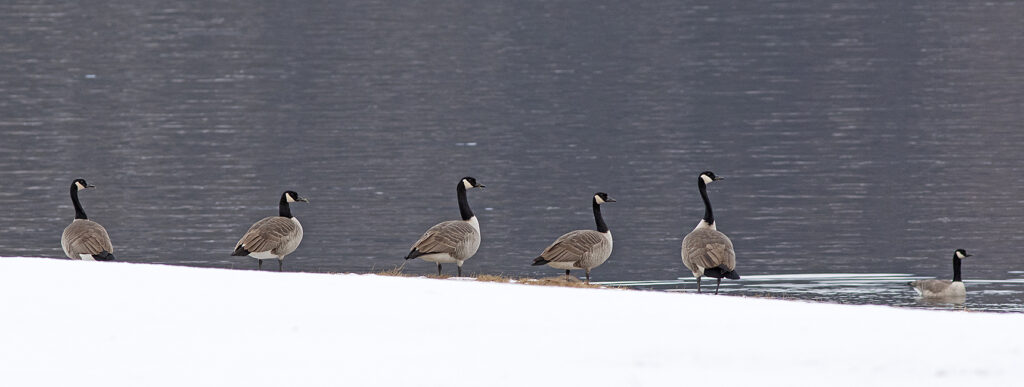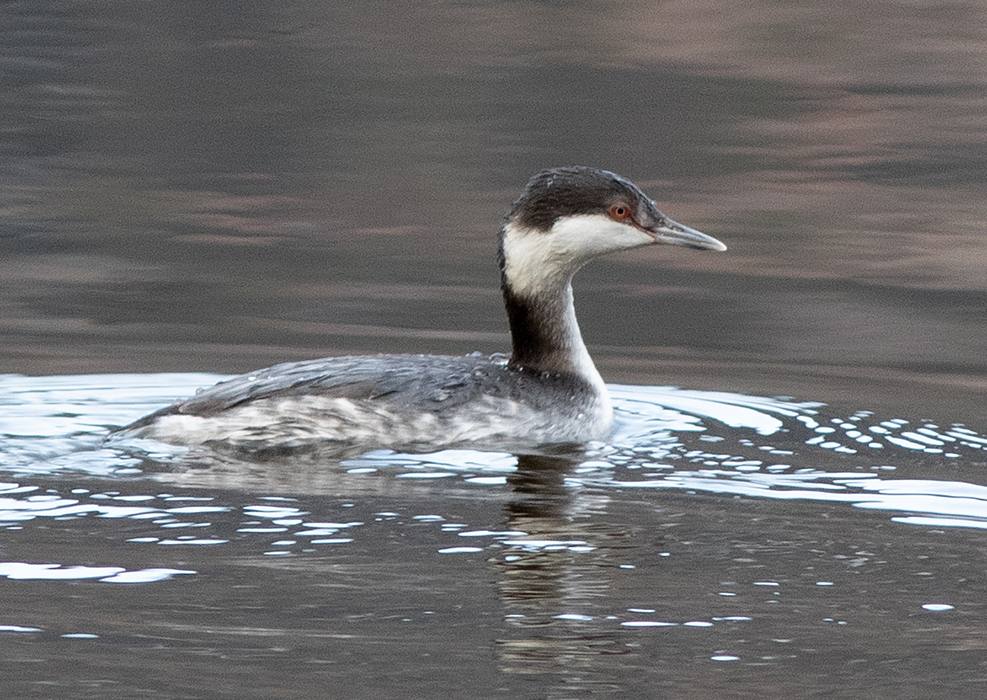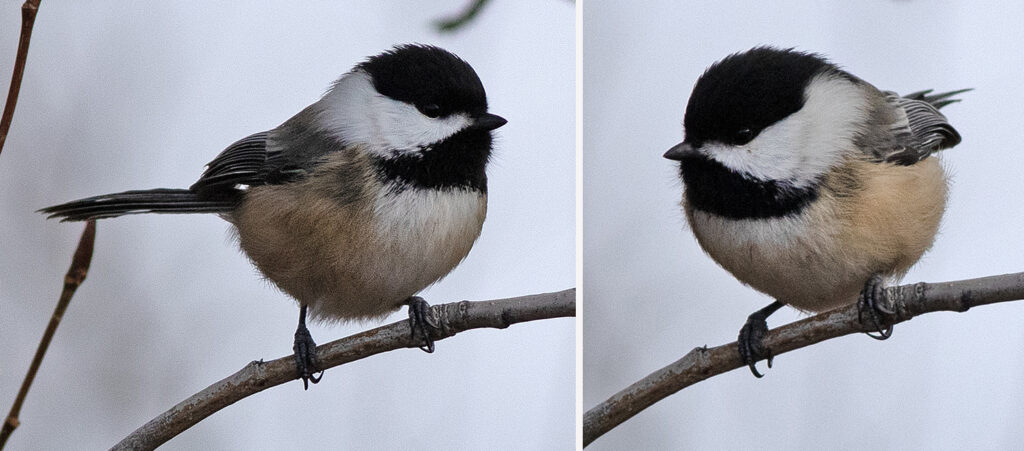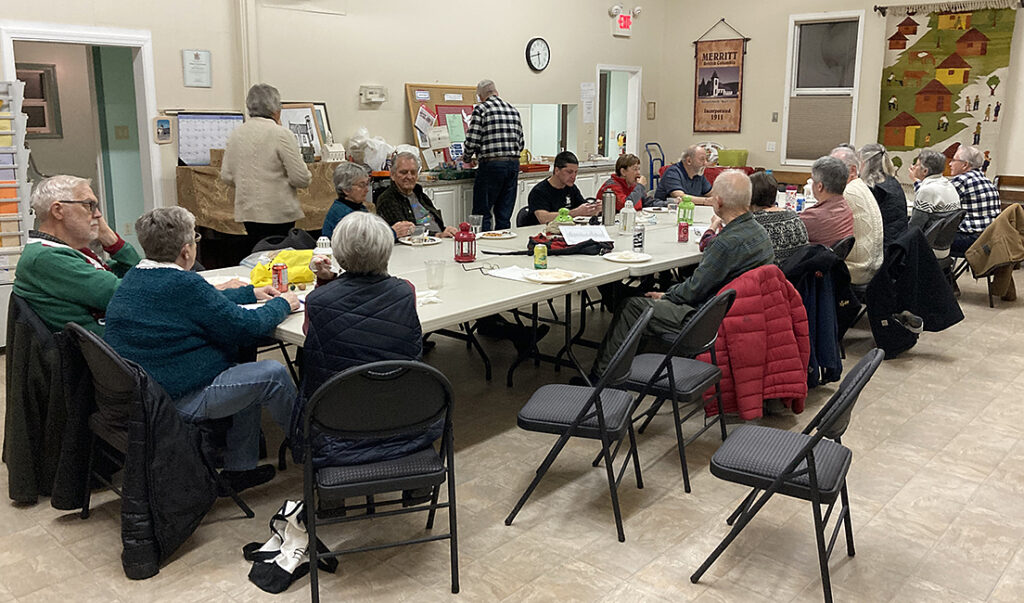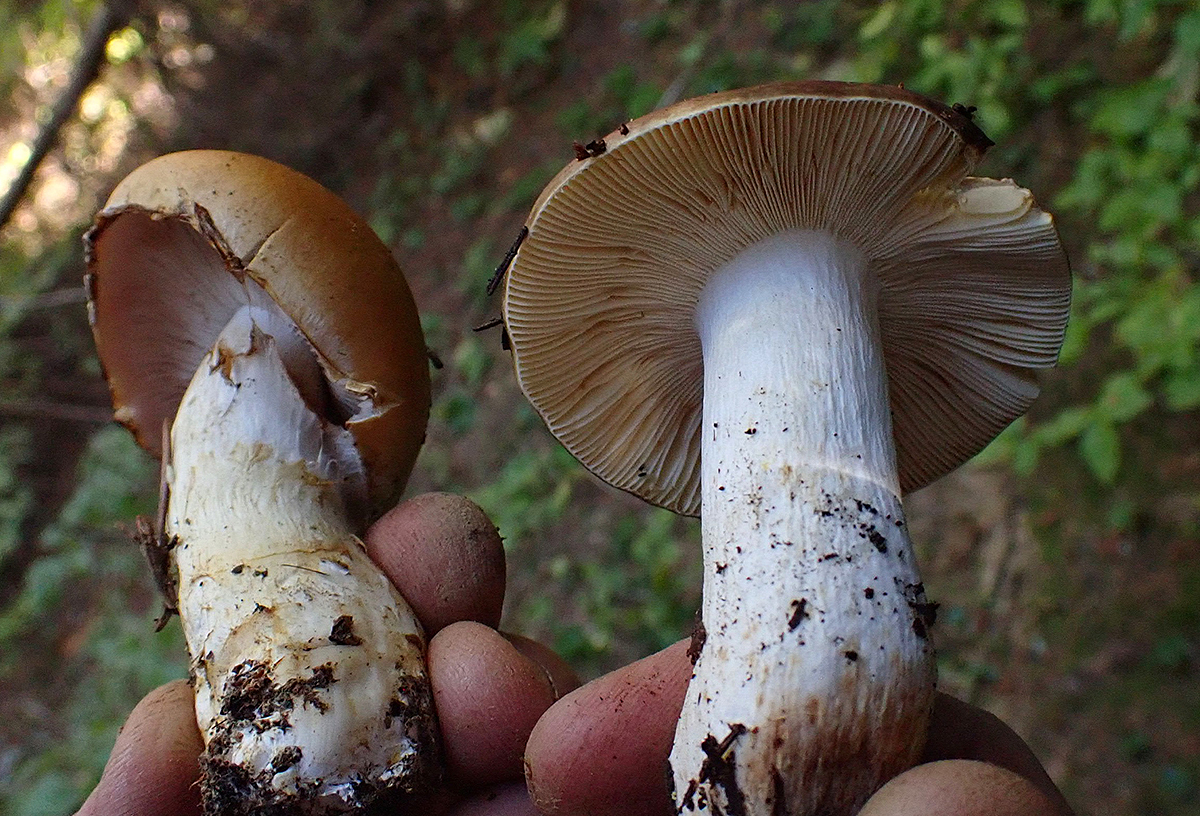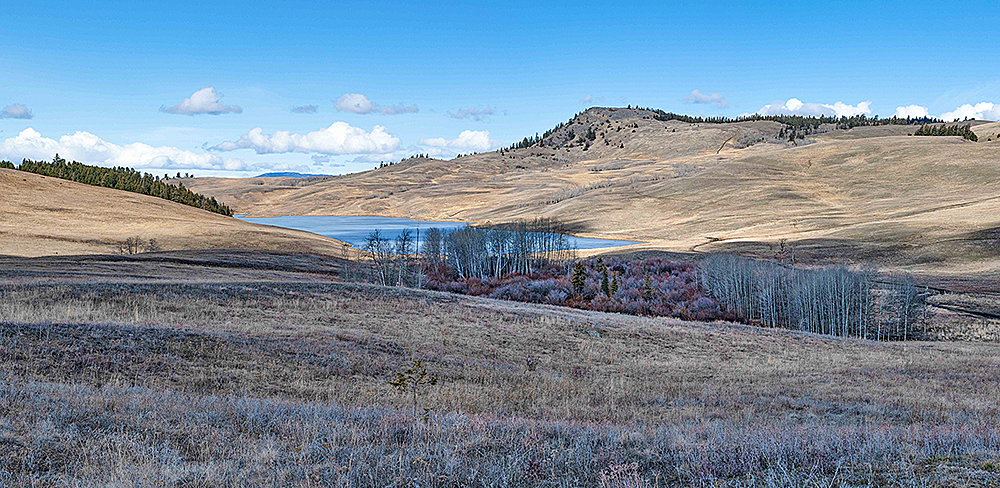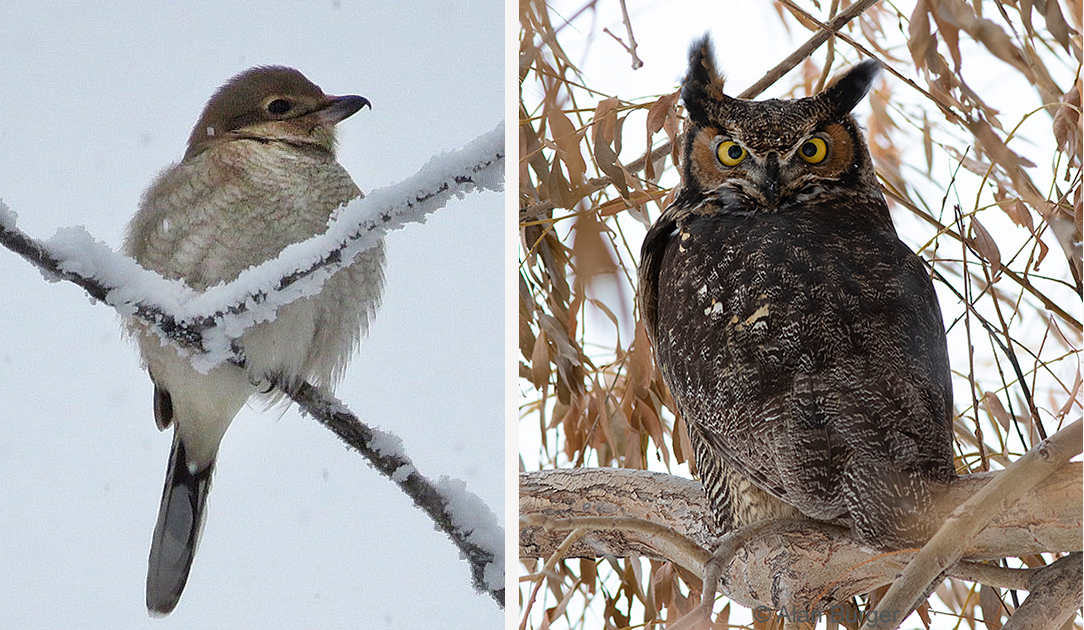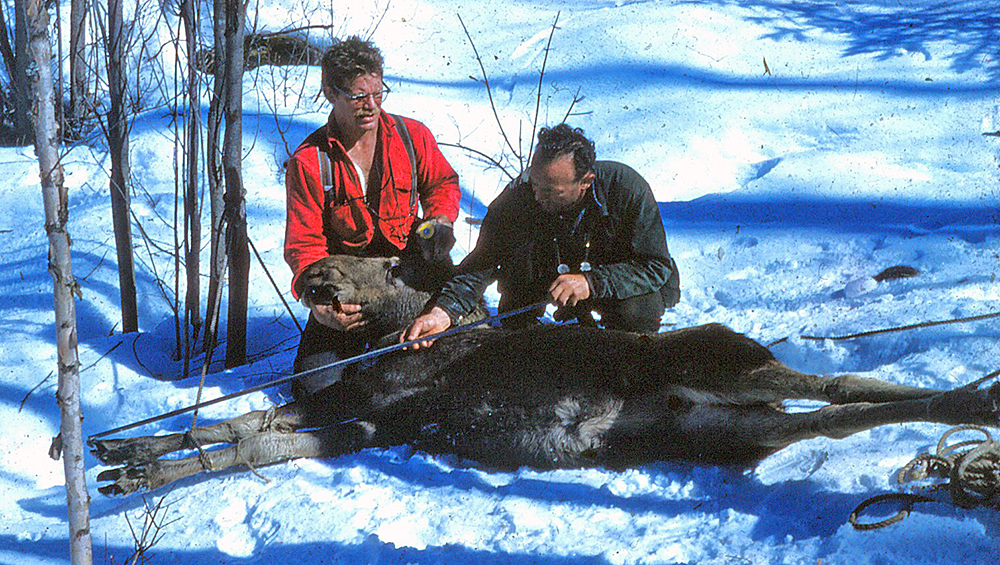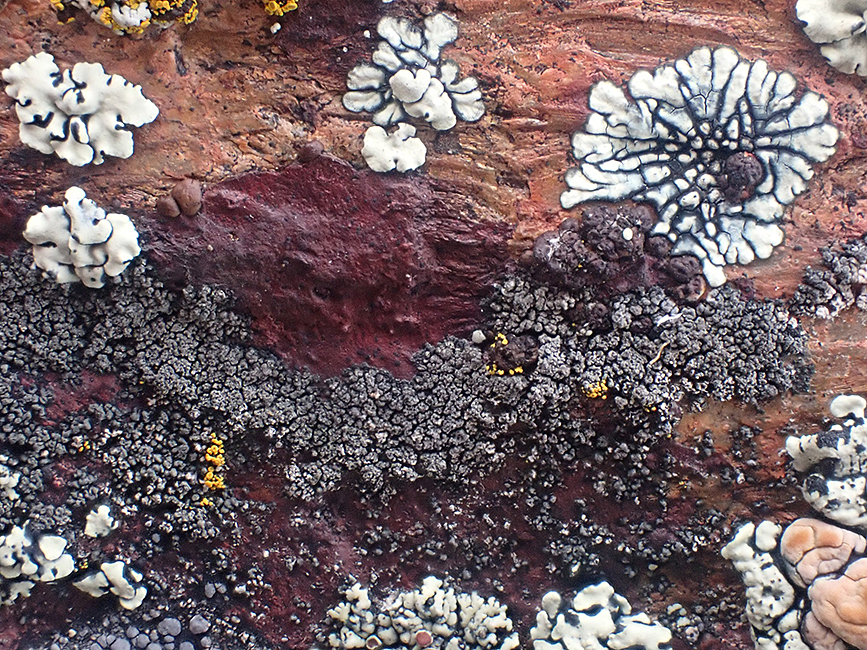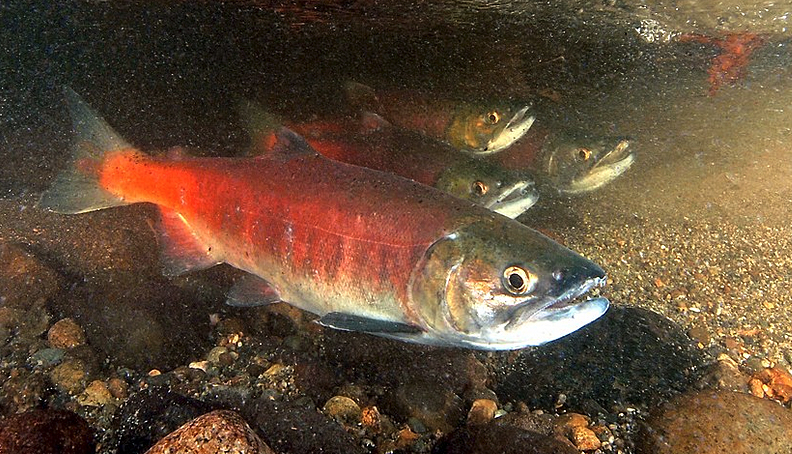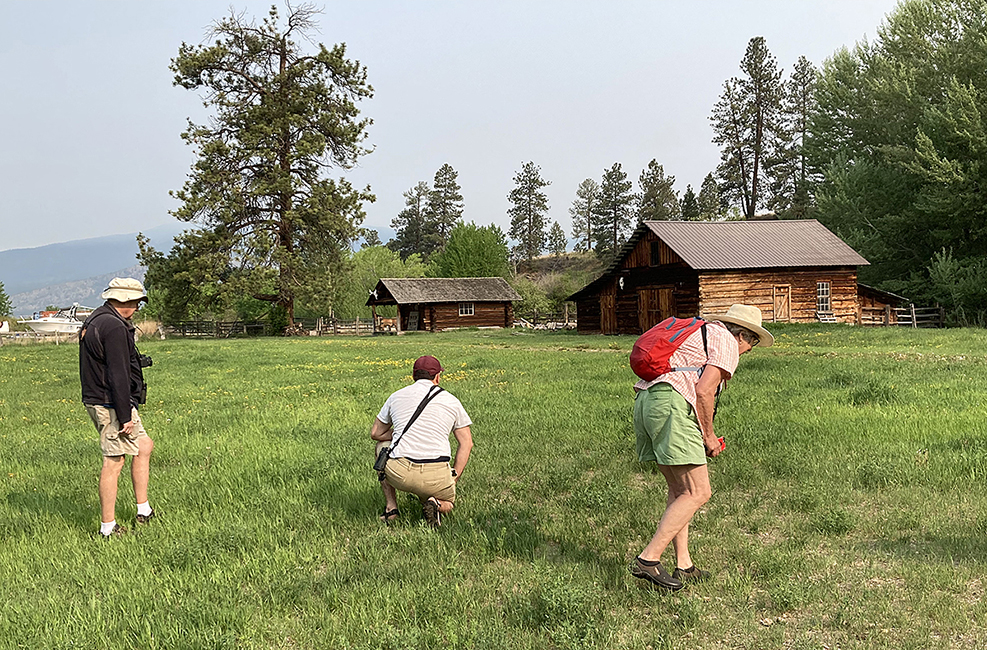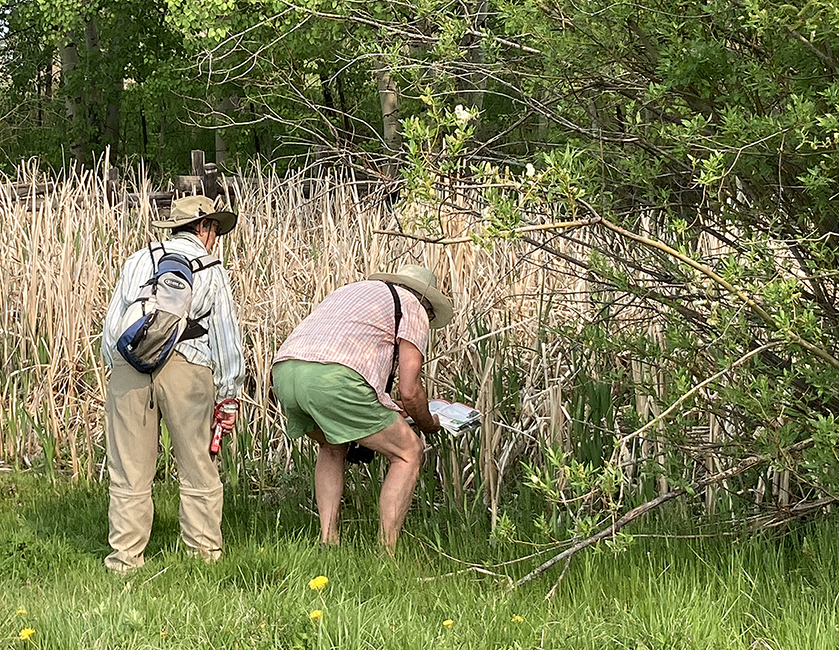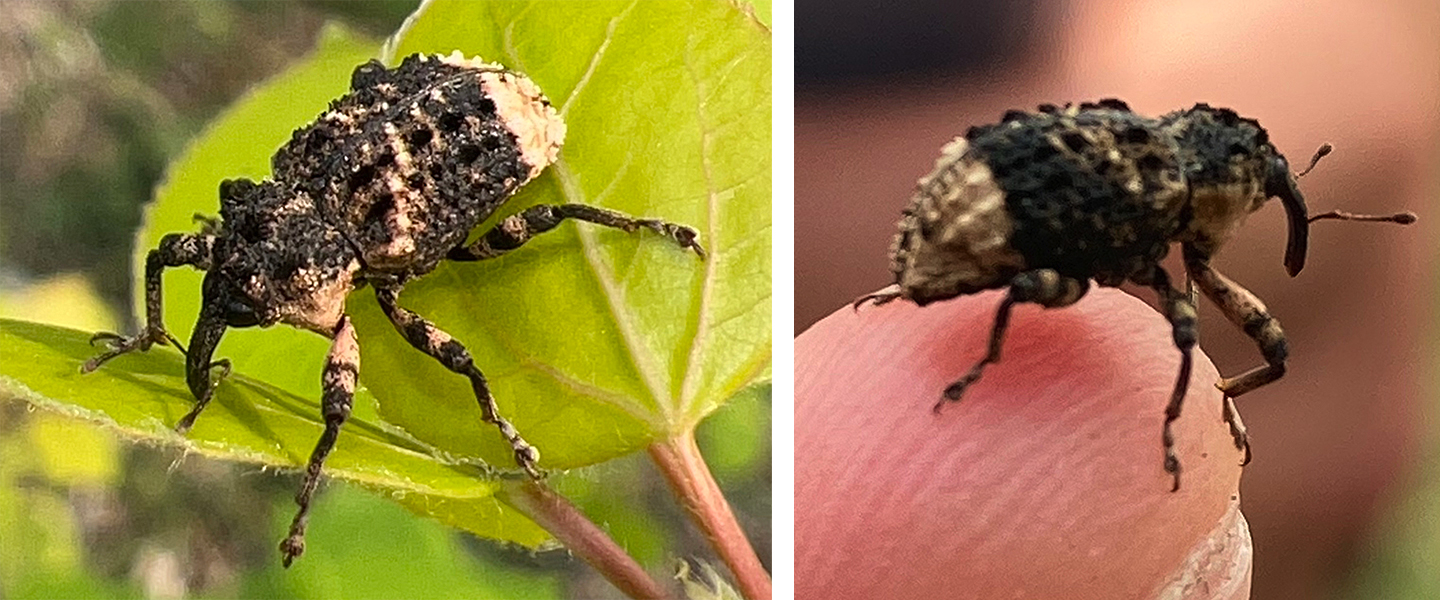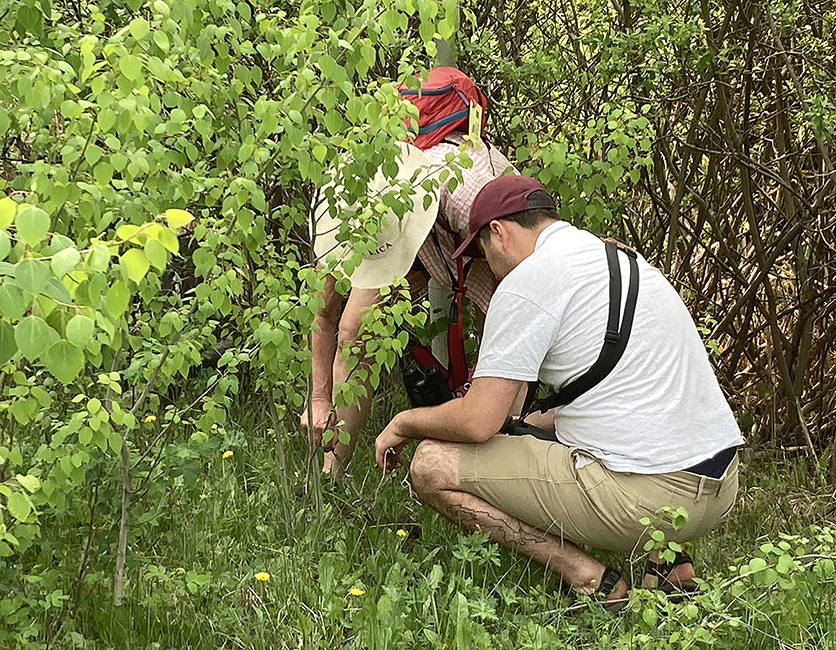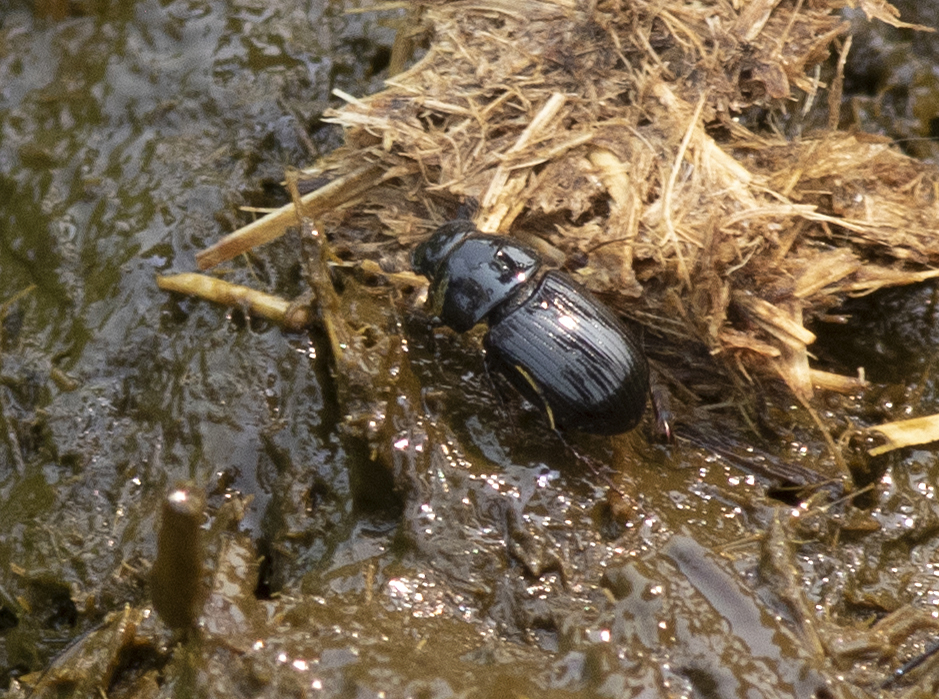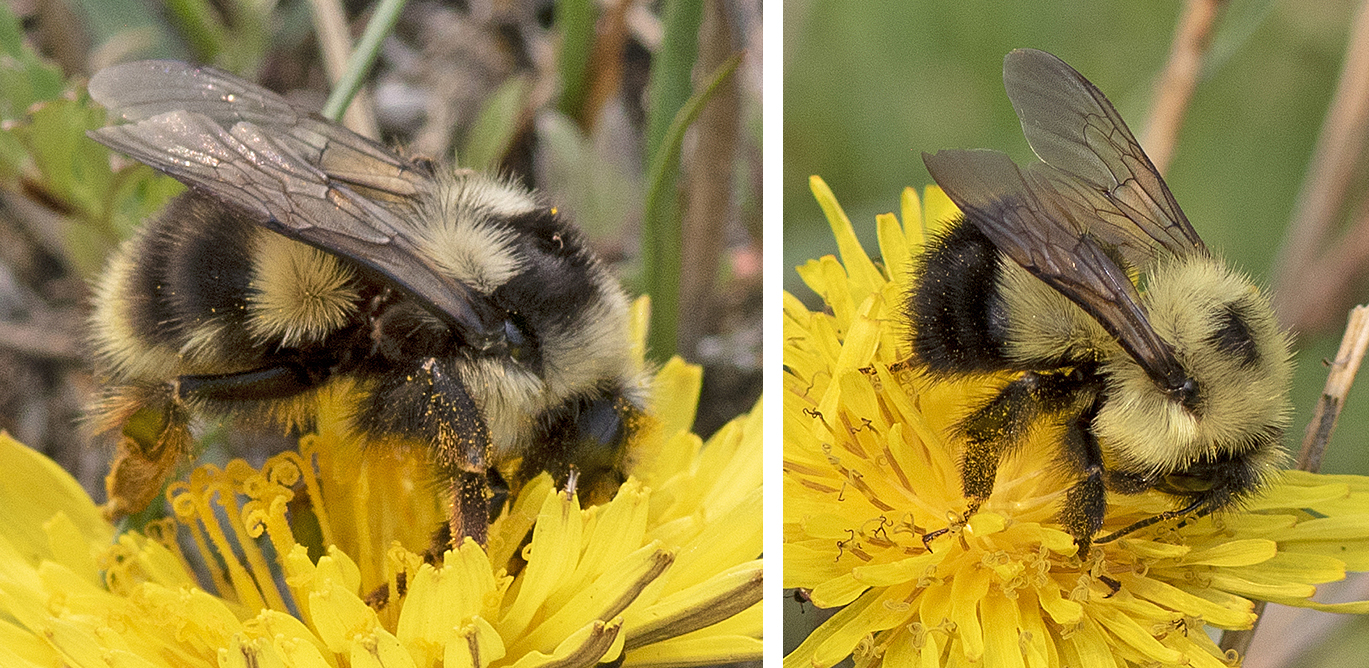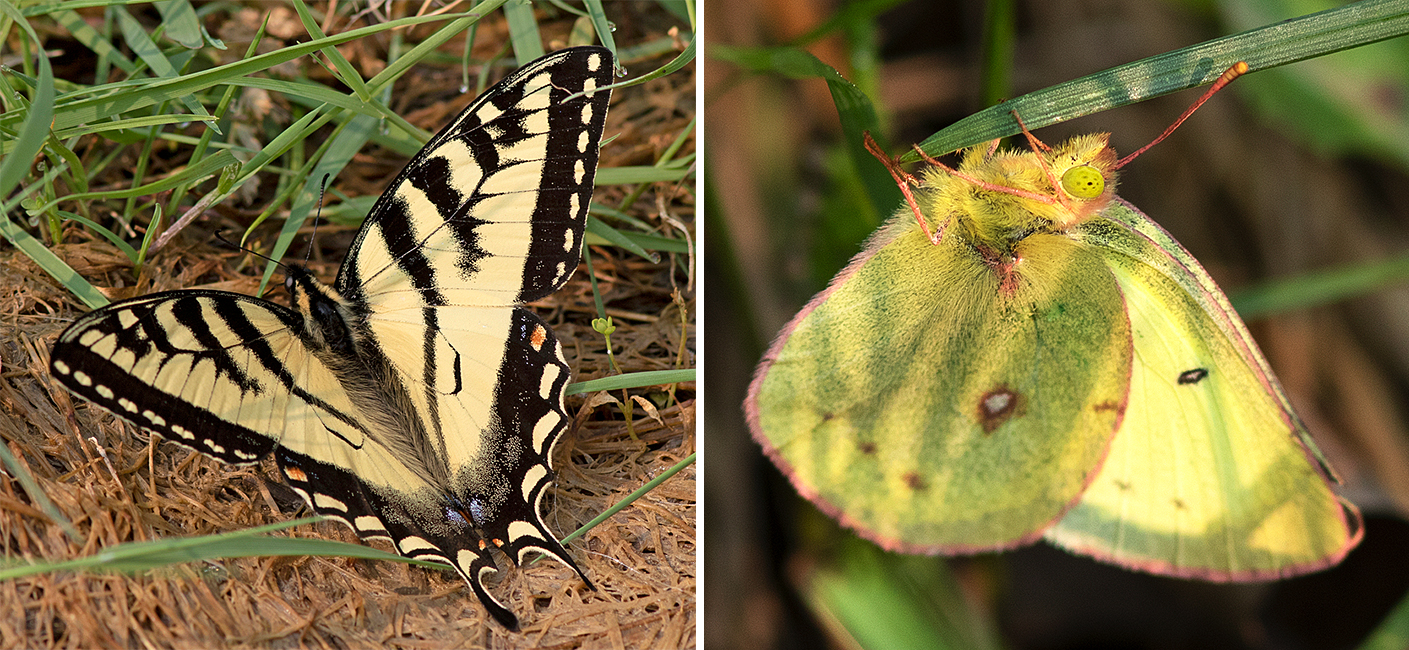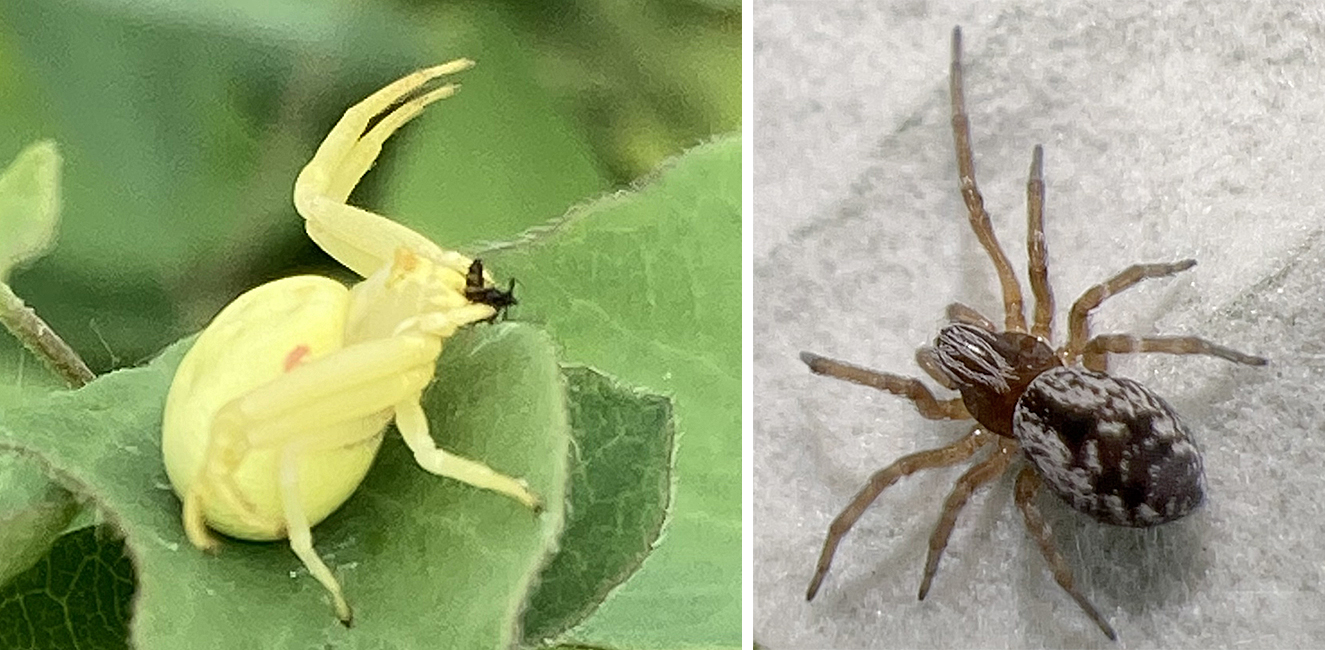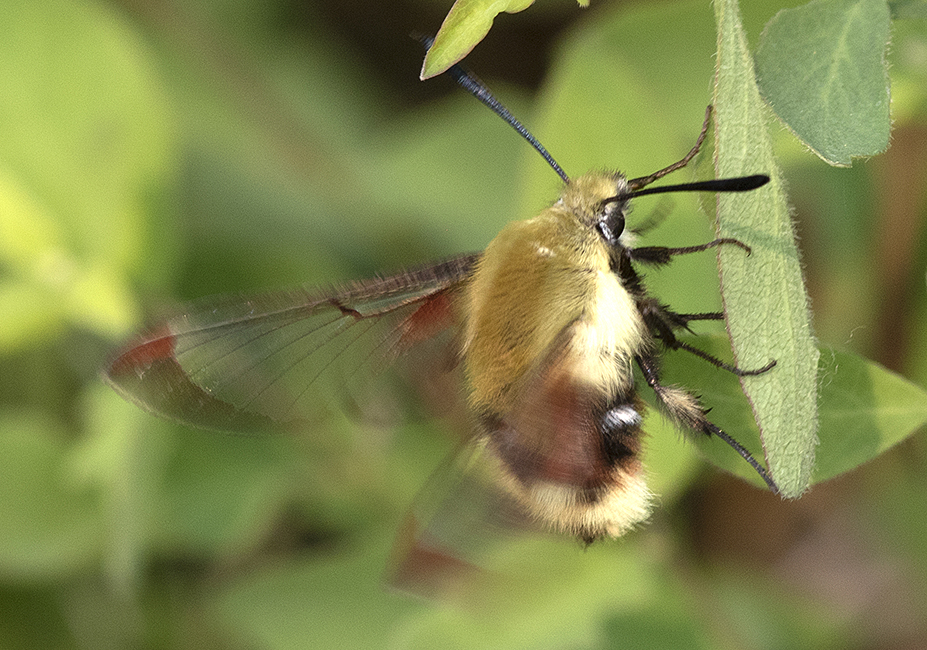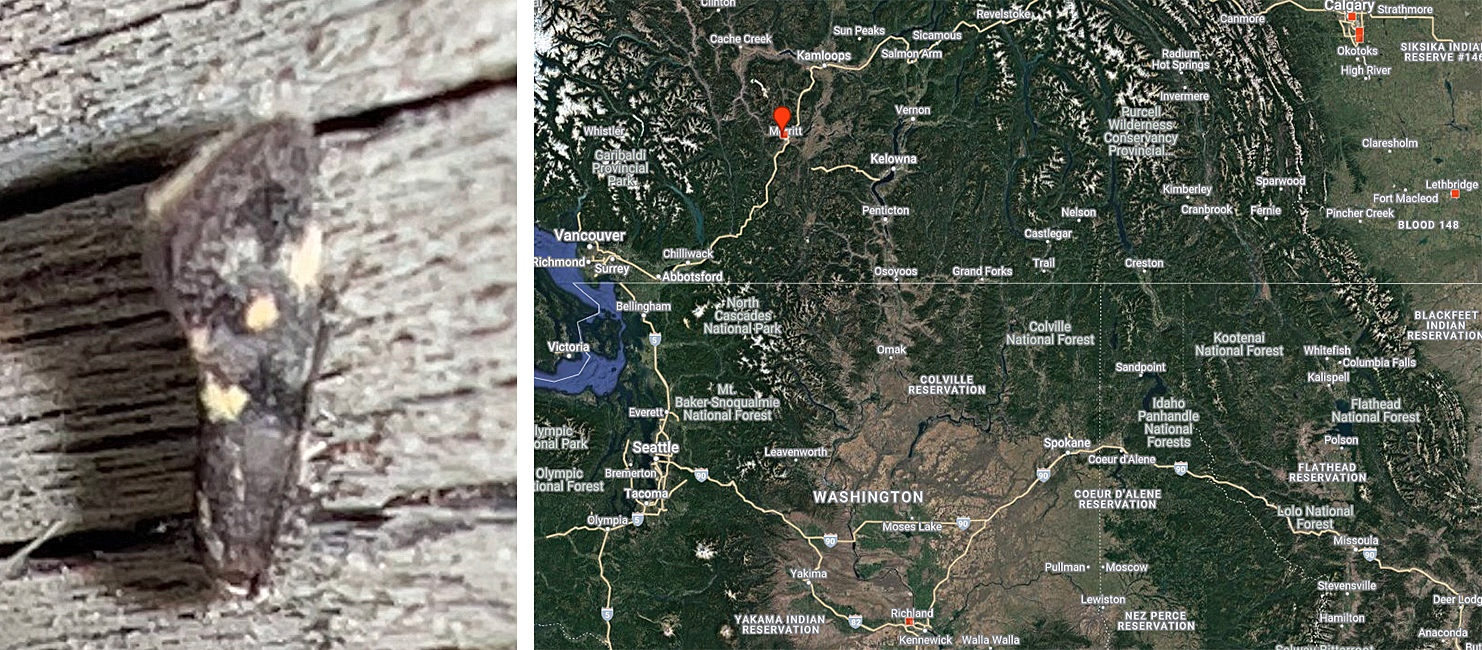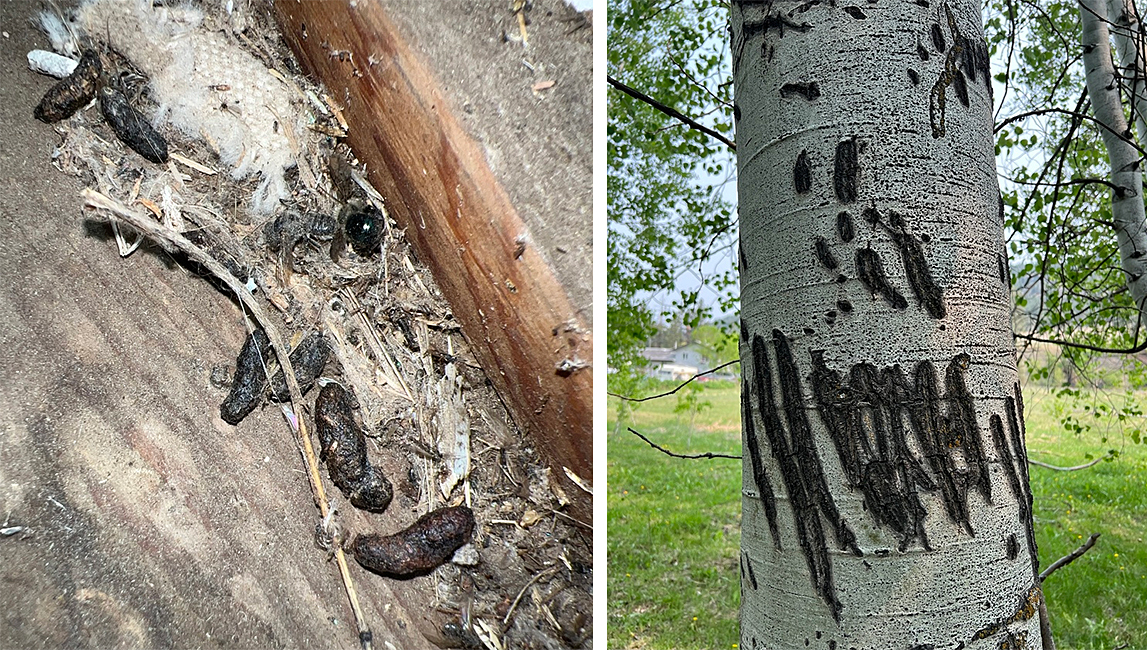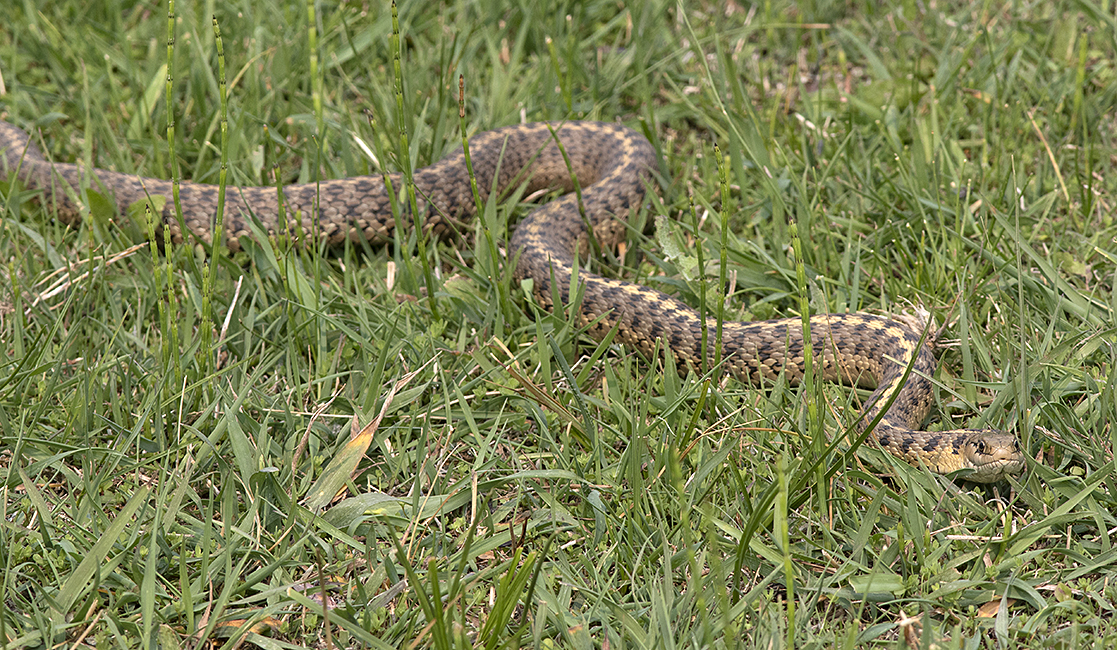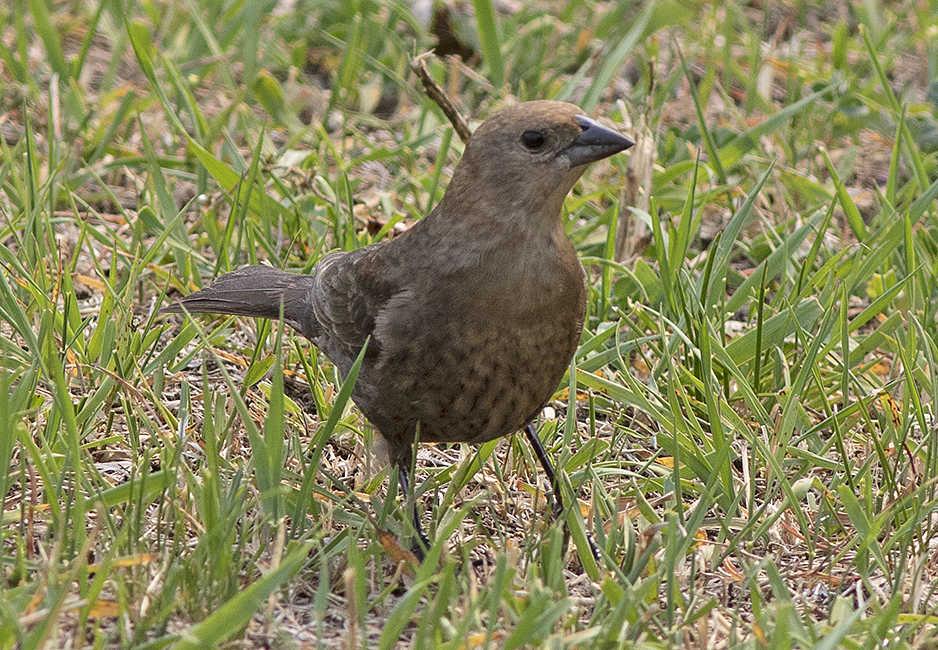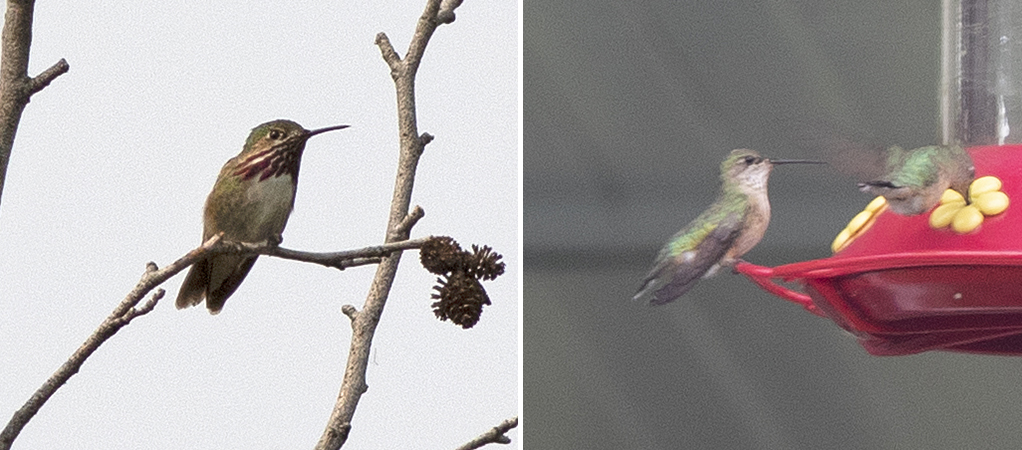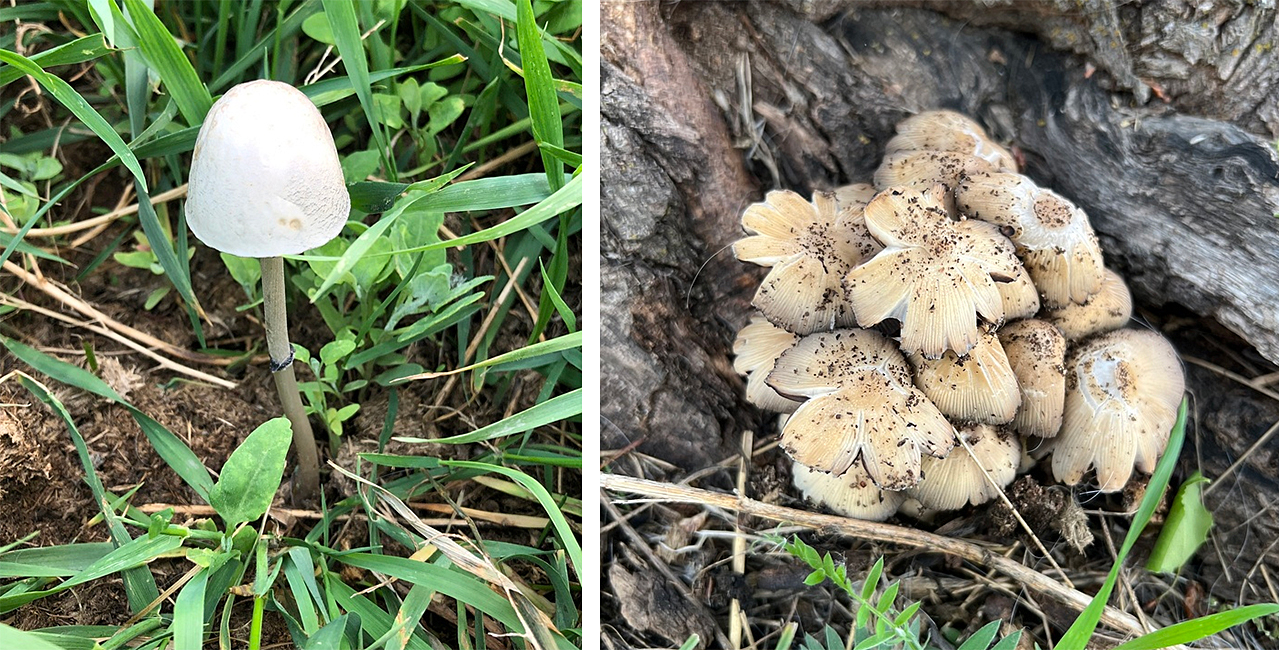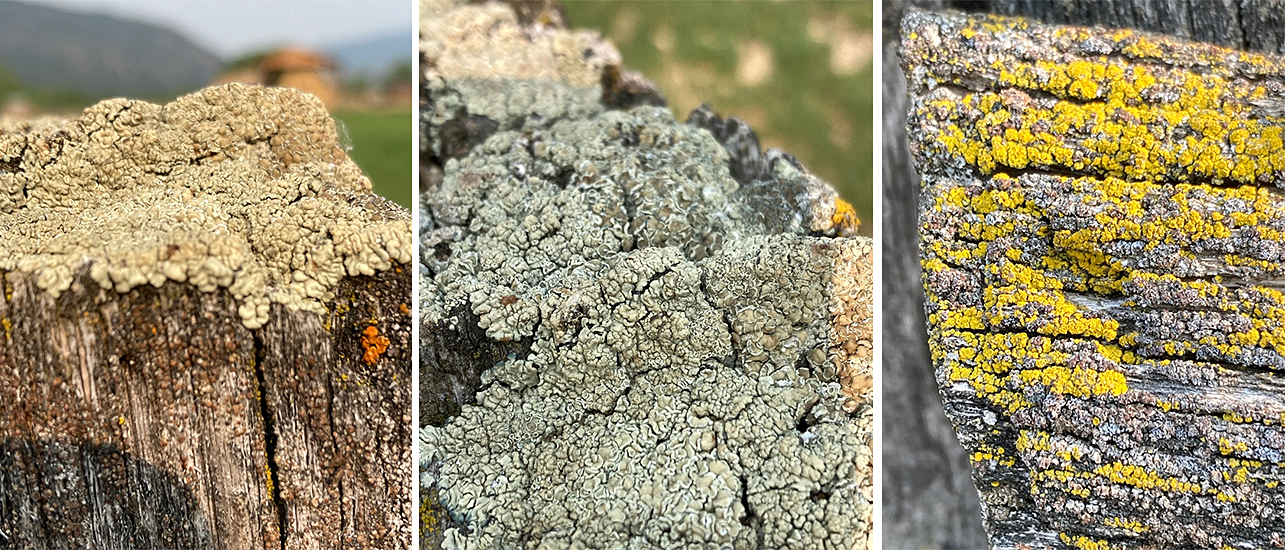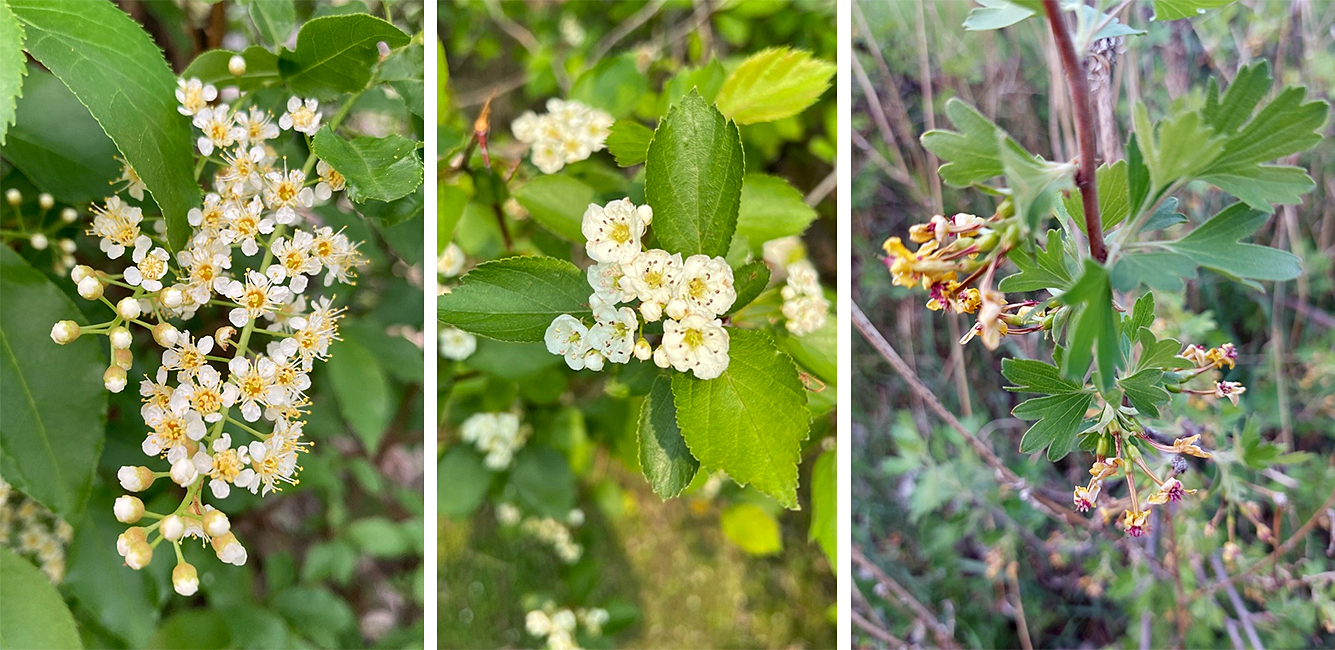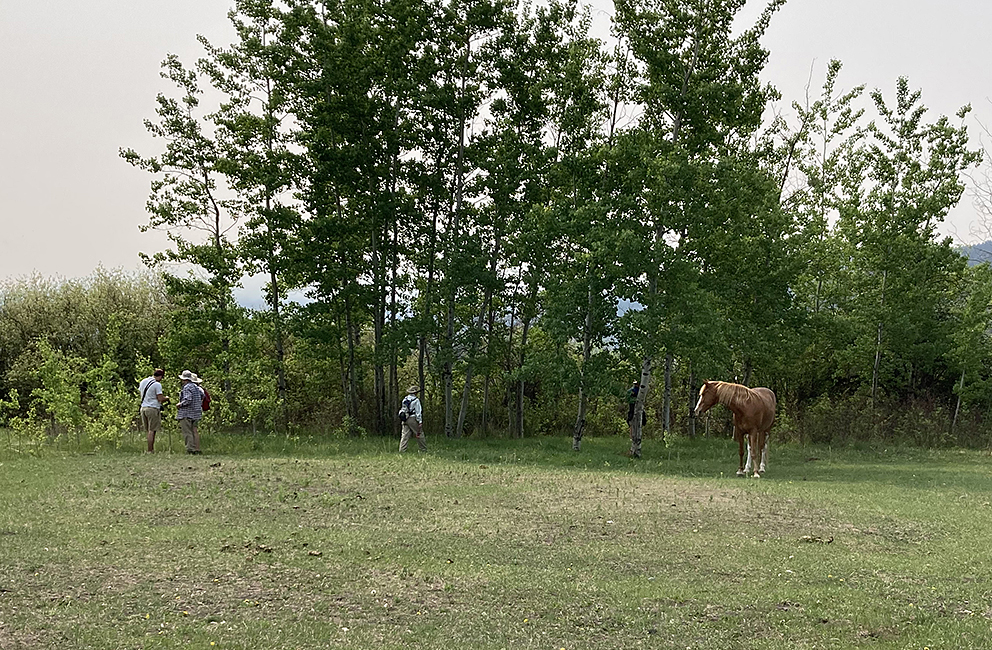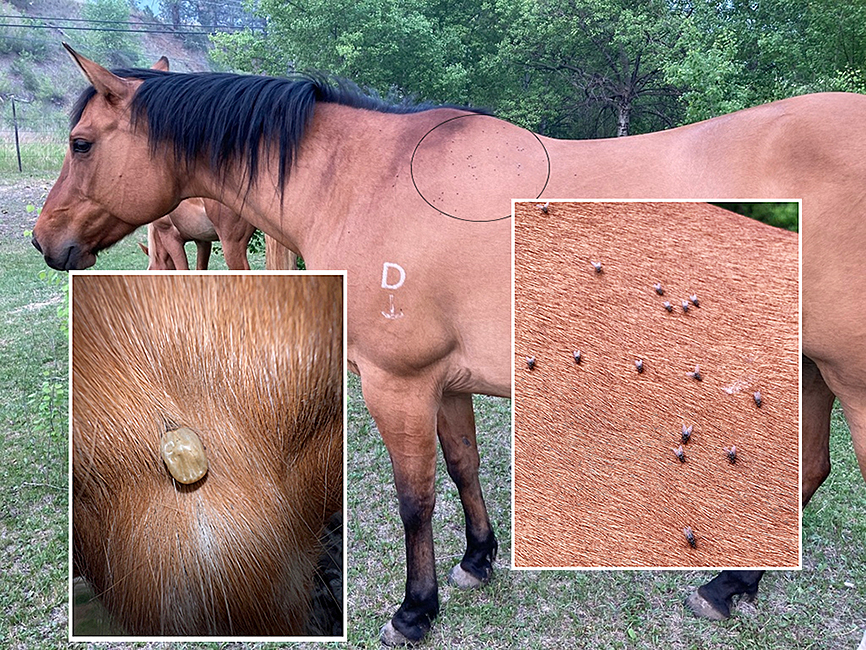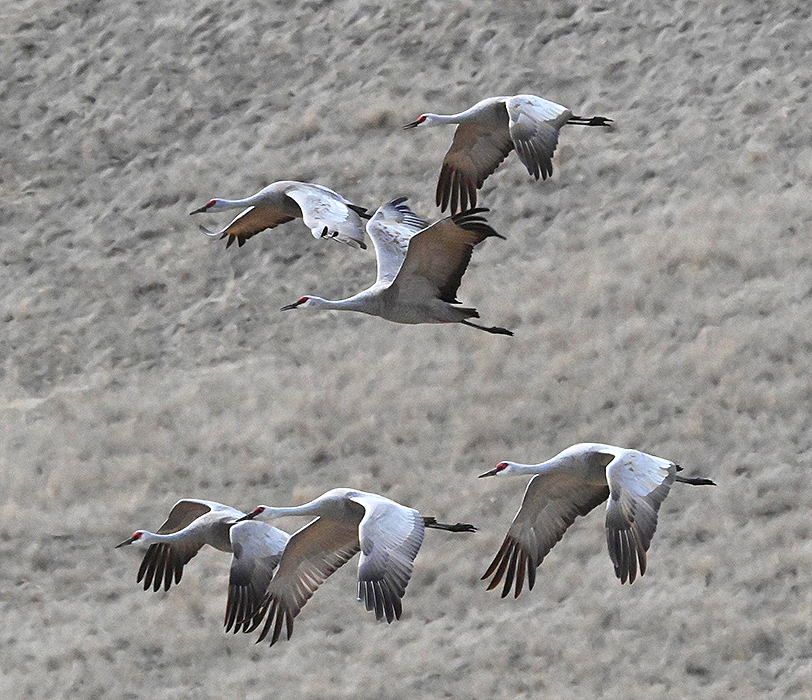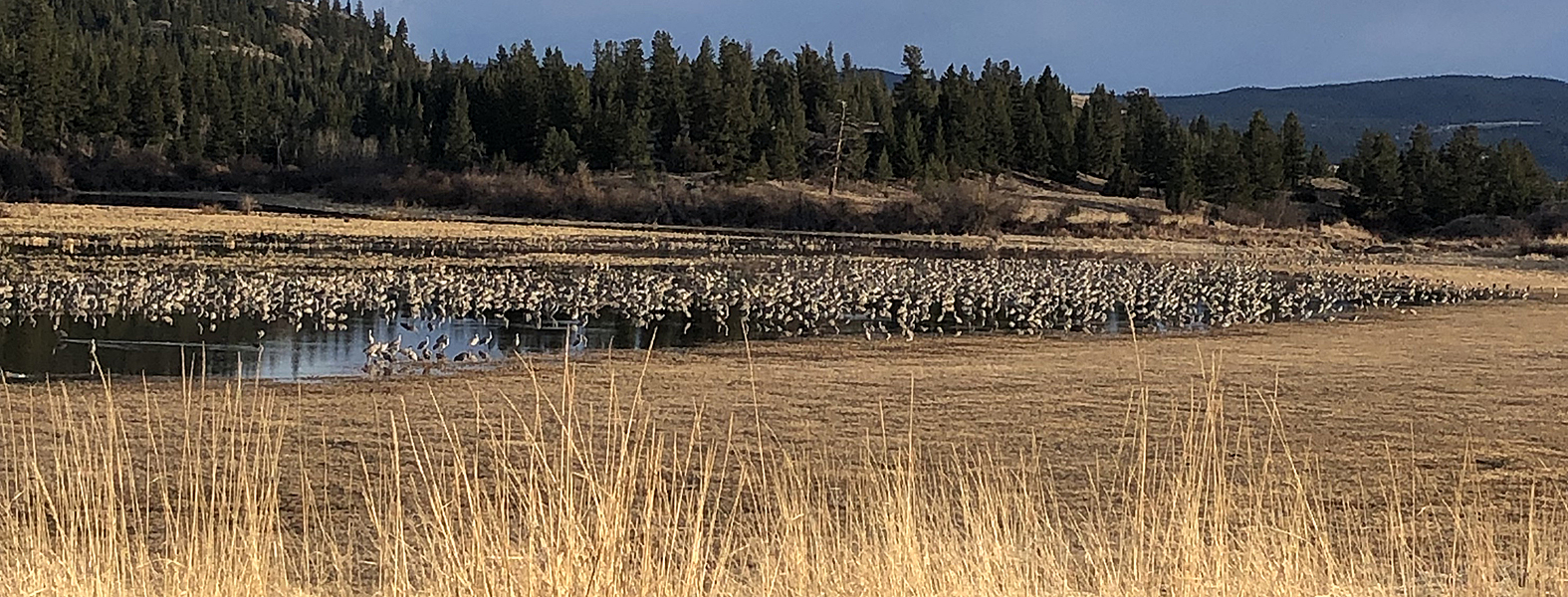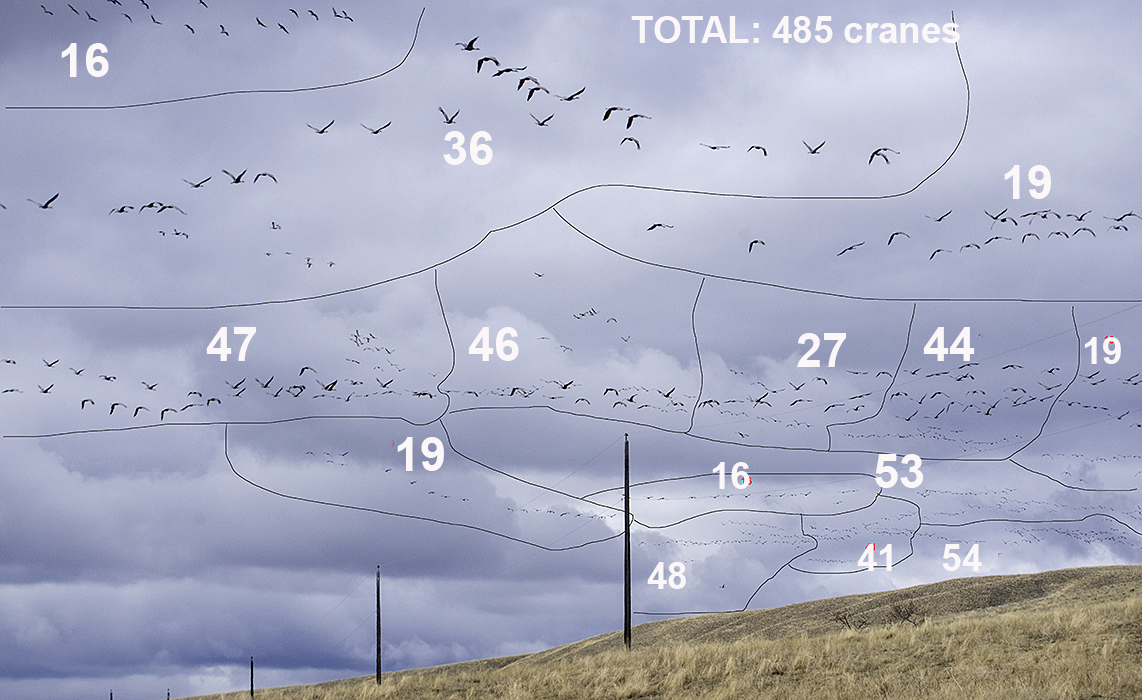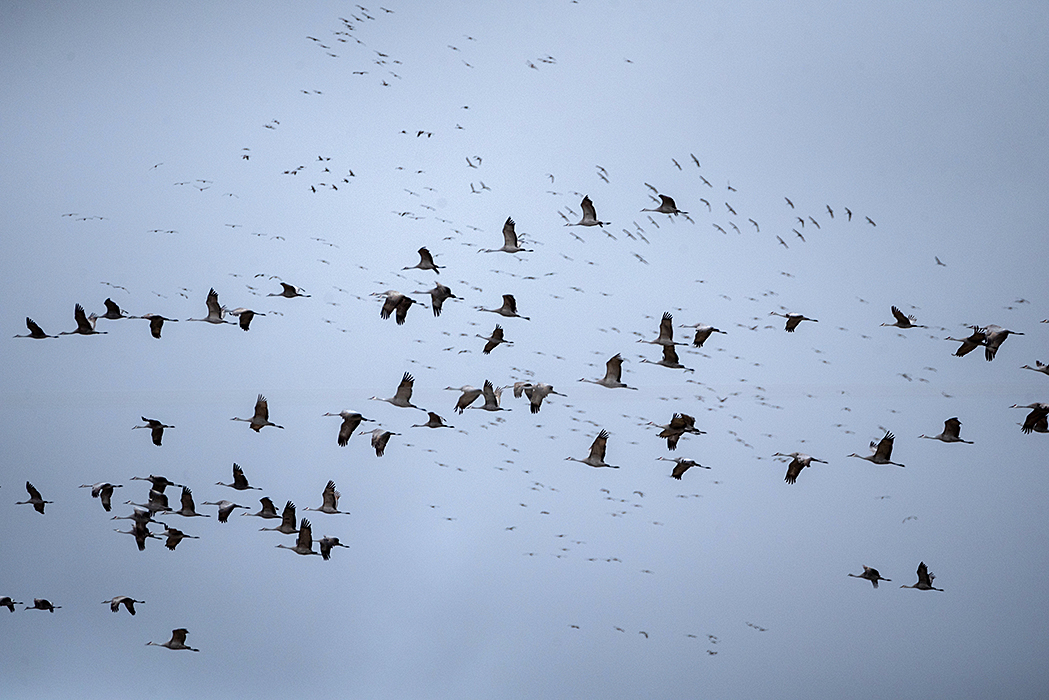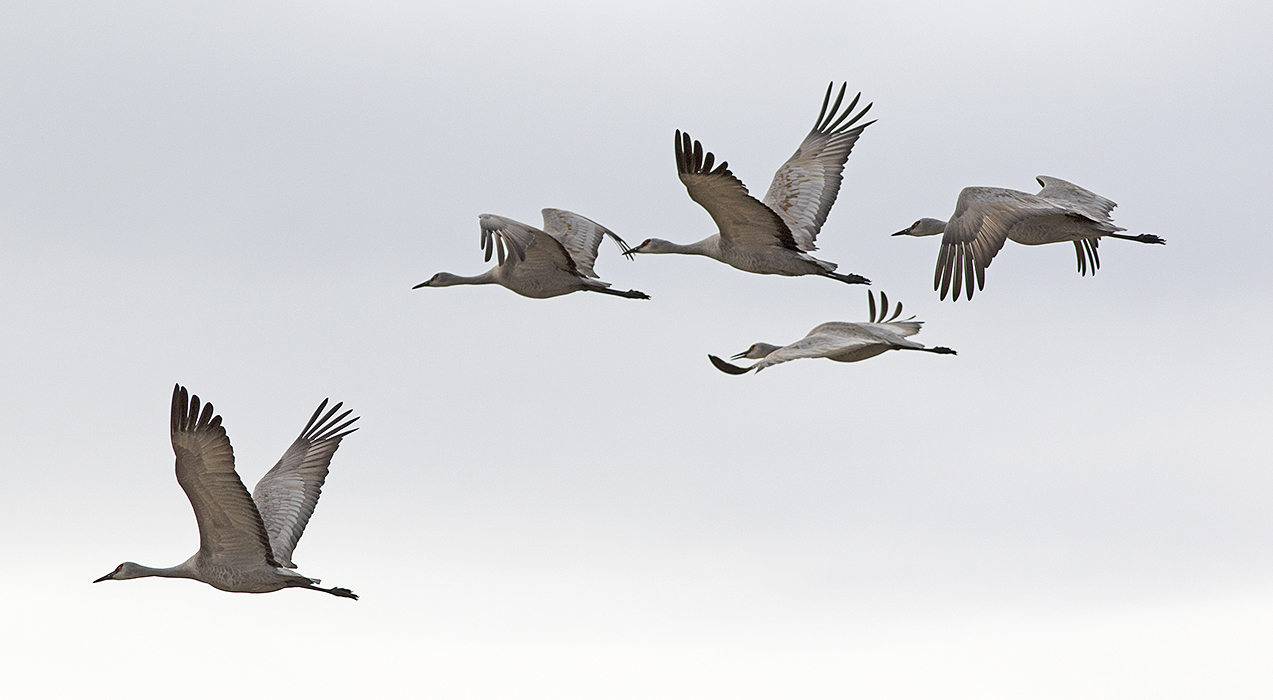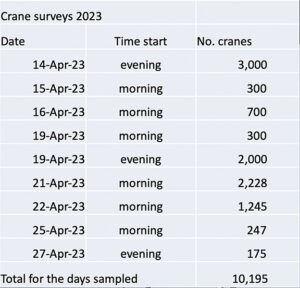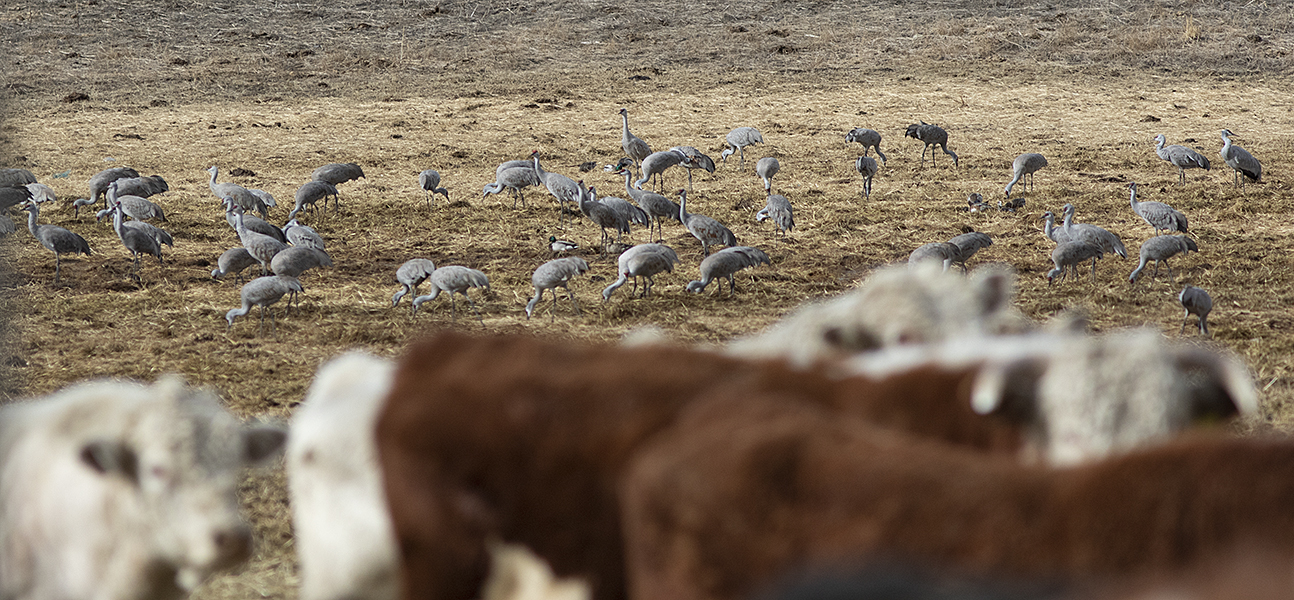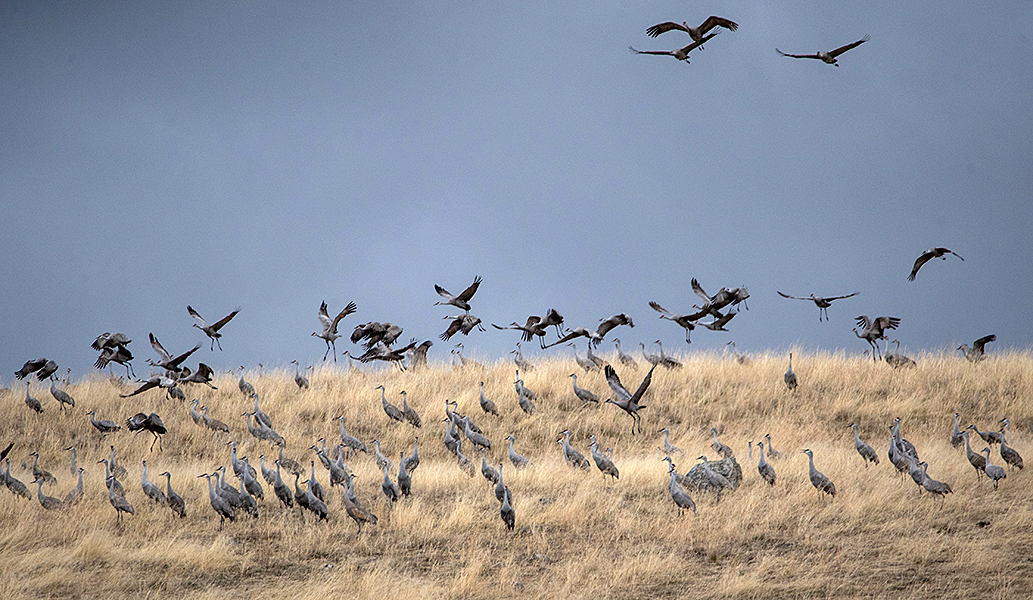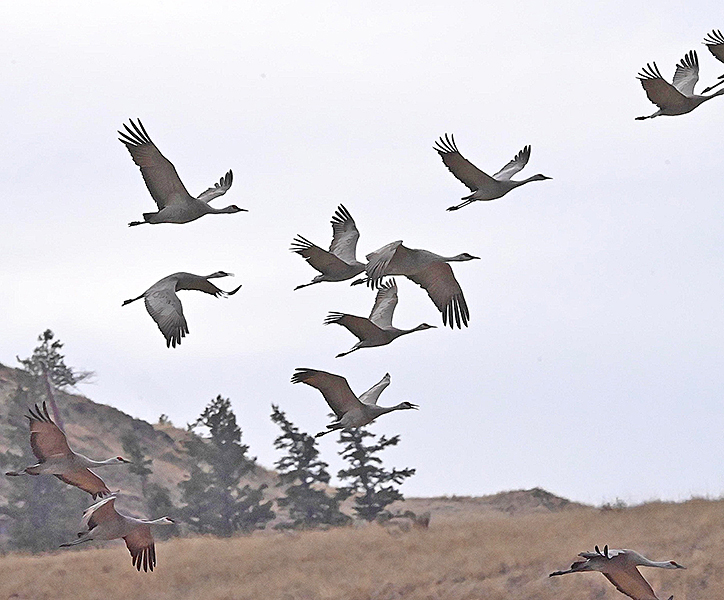The predicted high winds never arrived and we had near-perfect weather for the 26th Merritt Christmas Bird Count on December 14. We had 27 people out in eight groups and five feeder-watchers. Overall, we counted 64 species on the count day (just above the average of 61 species) and added a further two for the count week. Our tally of 5,846 birds is way above the average (4,172 birds) but not as impressive as our 2022 tally of 9,154 birds.
To see a summary of this year’s count click here: Merritt Xmas Count 2024 data
To see all 26 years of the Merritt CBC click here: Merritt Xmas Count data to 2024
Highlights
We added one new species to the overall species list for Merritt Christmas counts – a couple of Ring-billed Gulls were on Nicola Lake. This species was a Count Week record in 2018, but has never been seen on a Count Day.
A single Wood Duck was present among the other waterfowl on Nicola River. This species has only been reported on two previous counts.
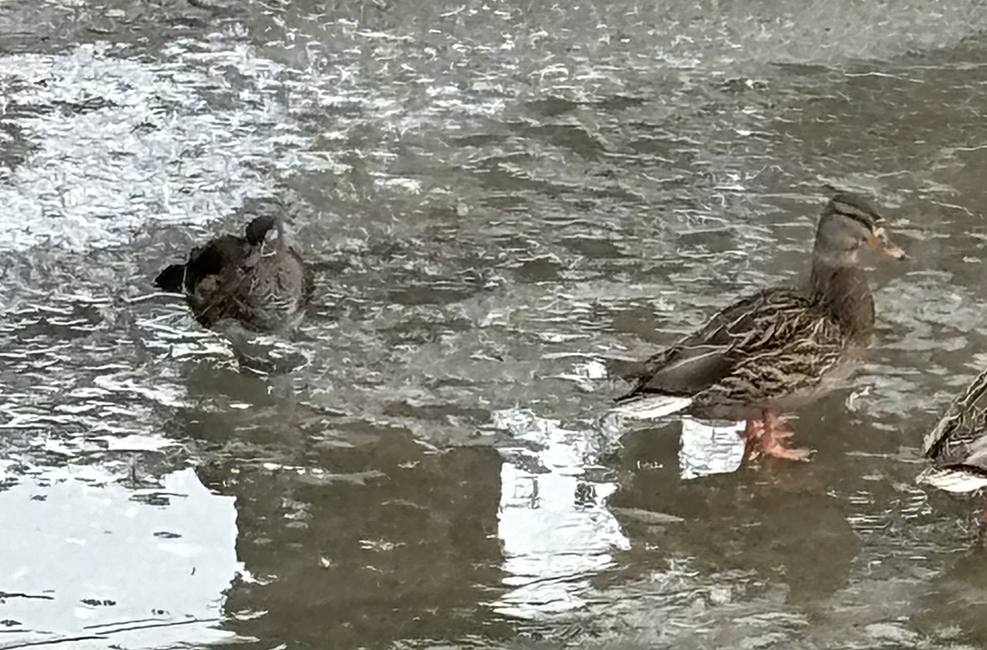
A female or immature Wood Duck on the ice at Nicola River – on the left. Mallards on the right. Photo: Susan Graham.
High counts or notable records were recorded for several species:
- Gadwall – 33 birds (average is 9 birds)
- American Wigeon – 65 birds (average is 20)
- Mallard – 3,072 birds (average is 1,341)
- Clark’s Nutcracker – 48 birds (average is 24)
- Pygmy Nuthatch – 40 birds (average is 19)
- Brown Creeper – 1 bird (only found on 6 previous counts)
- Townsend’s Solitaire – 18 birds (second highest ever – average is 7)
- American Robin – 82 birds (second highest ever – average is 24)
- Spotted Towhee – 13 (the highest ever – average is 5 birds)

Part of a flock of over 600 Mallards on Nicola Lake, along with 2 Trumpeter Swans and 3 Canada Geese. Panorama made from 4 photos stitched together. Photo: Alan Burger
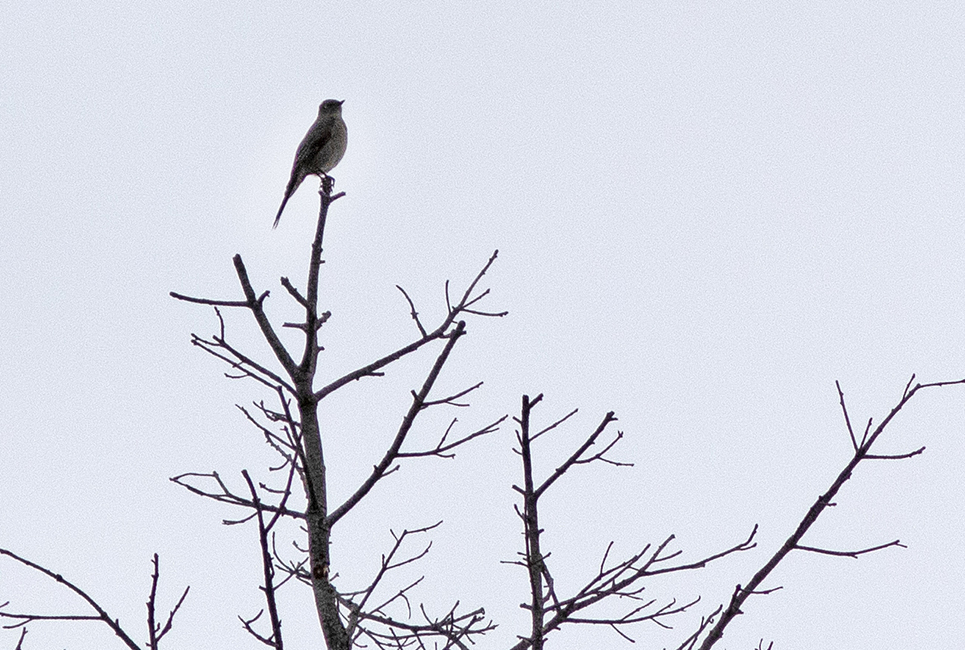
We found 18 Townsend’s Solitaires on December 14th. This was just one less than the record count of 19 in 2002. Photo: Alan Burger
Another notable species was Chukar – found the day before the count but not on the count day. This species has only been recorded on four of the 25 previous counts.
Low counts or missing regulars
A few species had exceptionally low numbers or were species that we regularly get but didn’t show up:
- Ring-necked Duck – 1 bird (average is 21 birds)
- Greater Scaup – 2 birds (average is 11)
- Lesser Scaup – none recorded (average is 11)
- Pied-billed Grebe – none recorded (found on 19 of the previous 25 counts)
- Sharp-shinned Hawk – seen in the Count Week but not on the Count Day (was in 17 of the previous 25 counts)
- American Kestrel – none recorded (was in 15 of the past 25 counts)
- Merlin – none recorded (was in 15 of the past 25 counts)
- American Dipper – 1 bird (average is 7 birds)
- House Finch – 70 birds (average is 174)
- Pine Siskin – 1 bird (average is 36)
The paucity of blackbirds continues. Last year we had no blackbirds and this year far fewer than normal. We suspect that the usual cattle feedlot where they hang out now feeds their cows less grain and more hay.
- Red-winged Blackbird – 12 birds (average is 87 birds)
- Brewer’s Blackbird – 4 birds (average is 45)
More photos
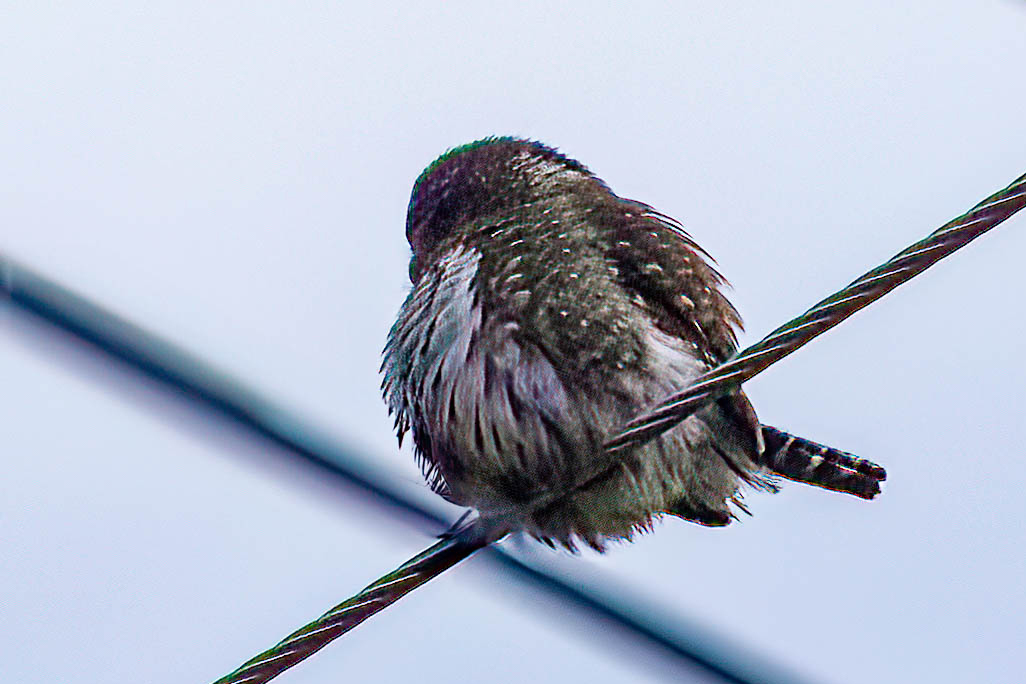
Northern Pygmy-owls are always a treat to see. We had two on the Merritt Christmas Bird Count. Photo: Glenn Dreger.
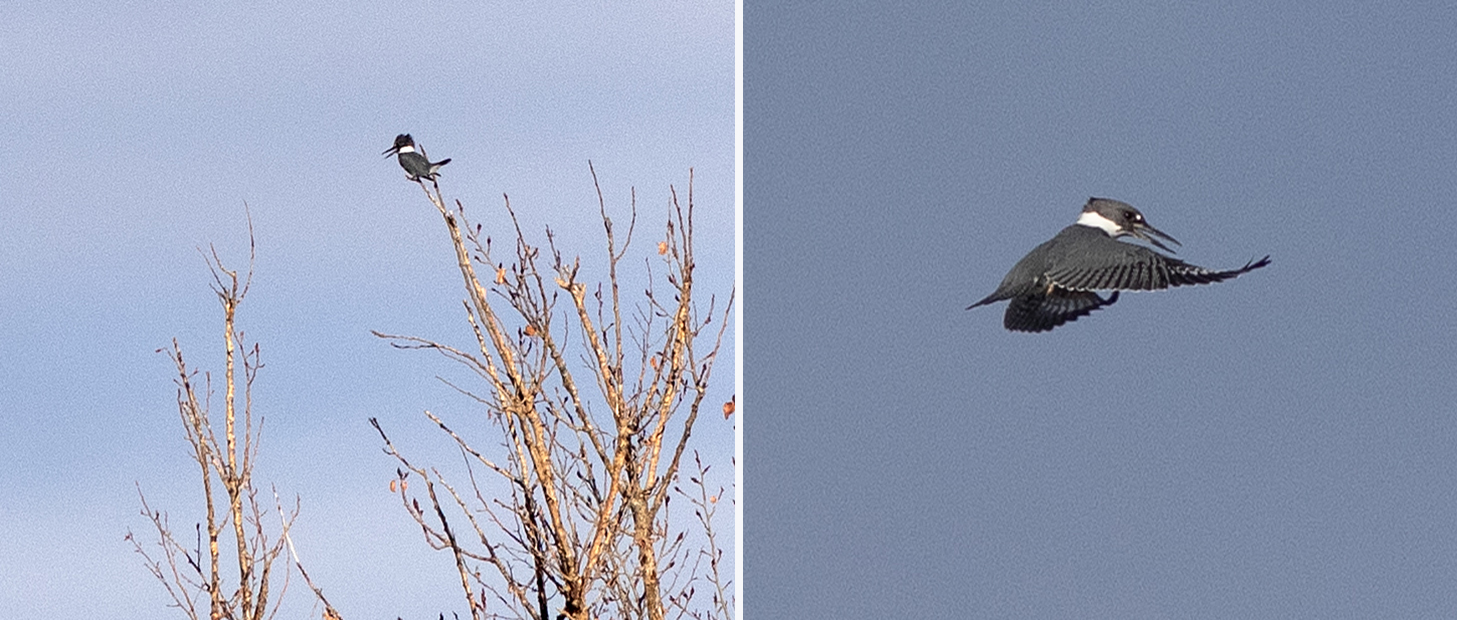
This Kingfisher at Nicola Lake was the only one seen on the Merritt Christmas Bird Count. Photos: Alan Burger
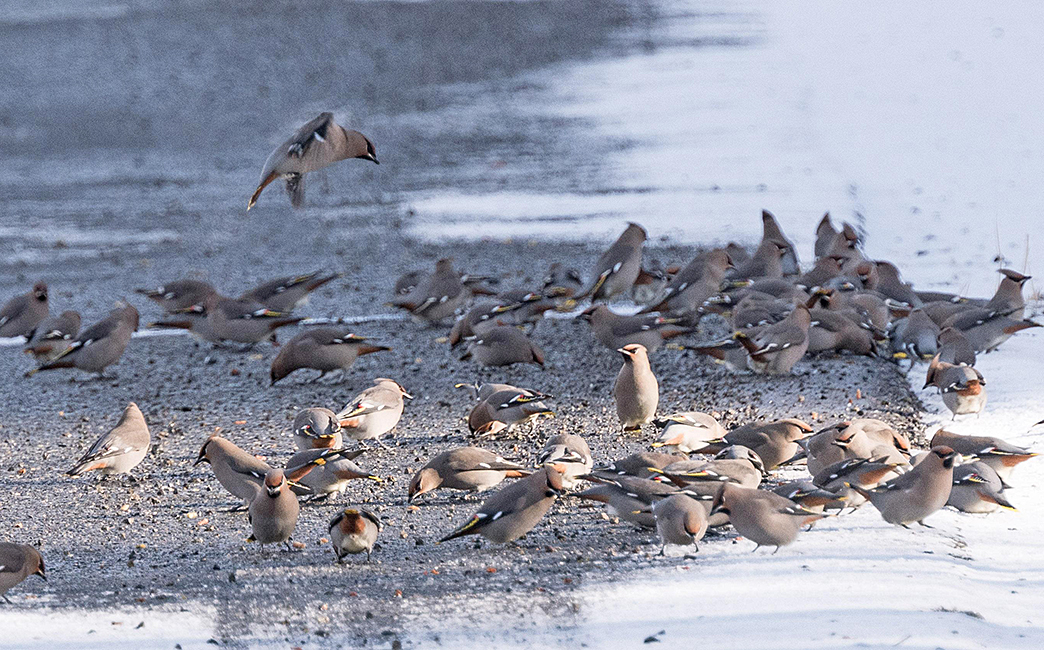
These are some of the 380 Bohemian Waxwings we tallied on the Merritt Christmas Bird Count. This species is a winter visitor to our area from northern boreal areas. Photo: Loekie van der Wal.
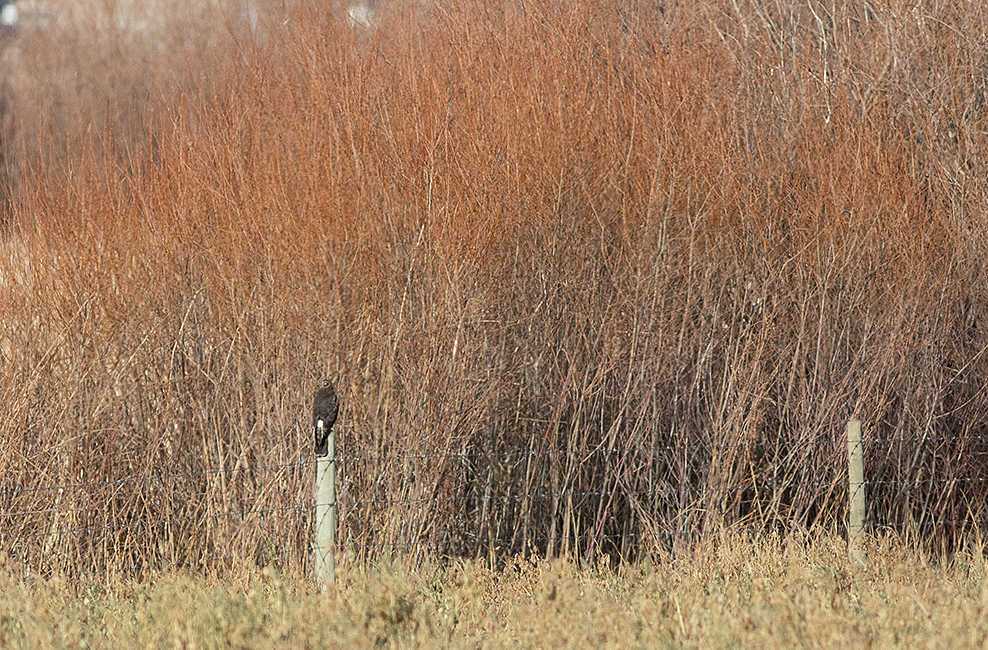
Spot the Northern Harrier? Sitting on a fencepost at Quilchena. This was the only harrier for the count day. Photo: Alan Burger
And let’s not forget the birders ……
~~~~~~~~~~~~~~~~~~~~~~~~~~~~~~~~~~

